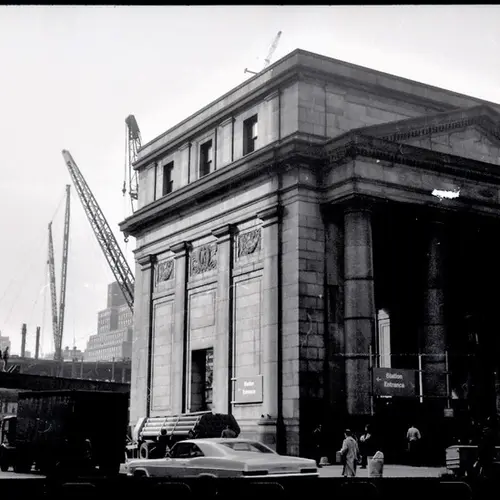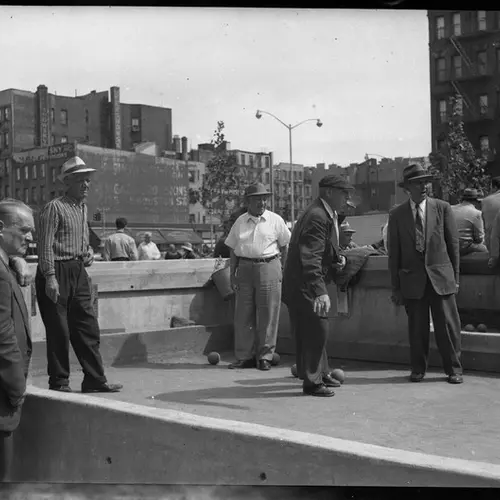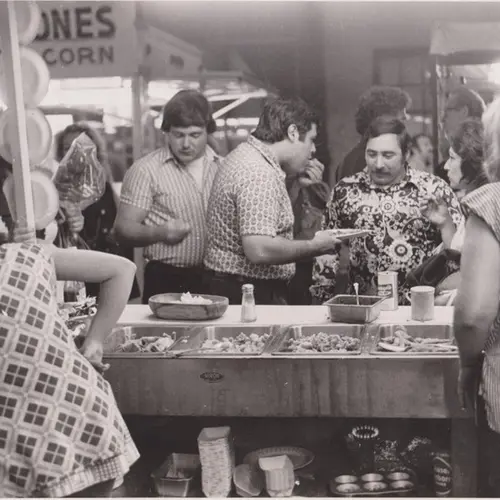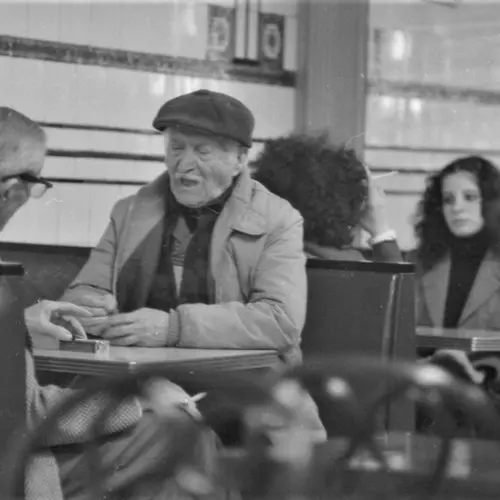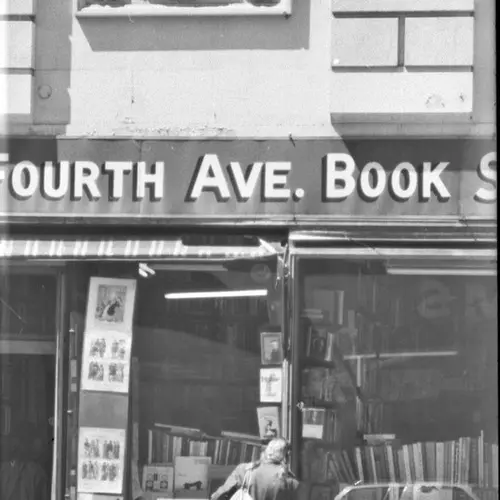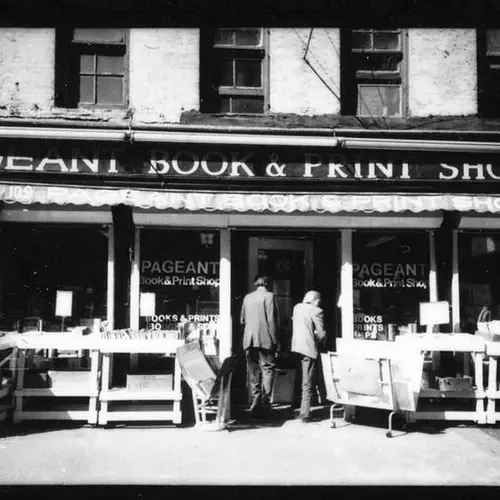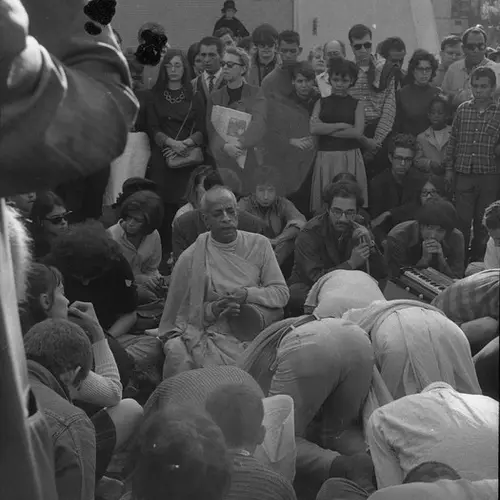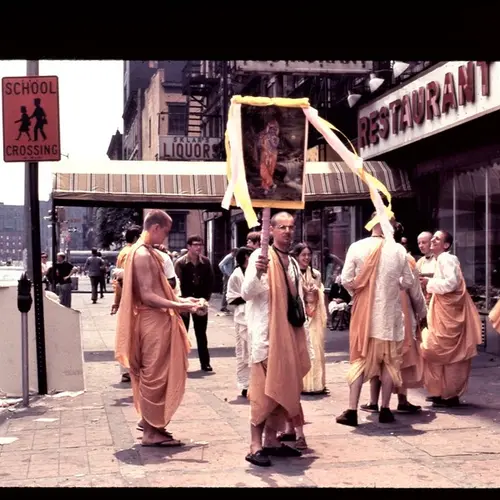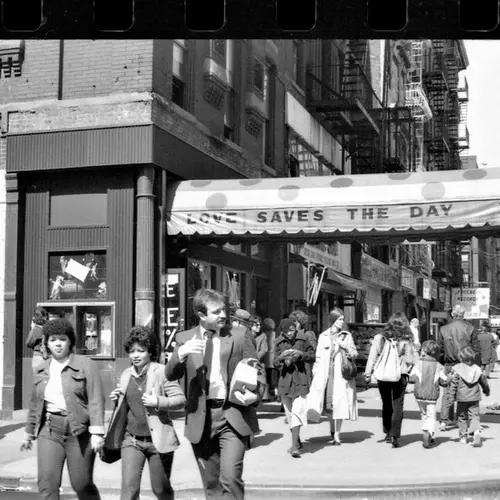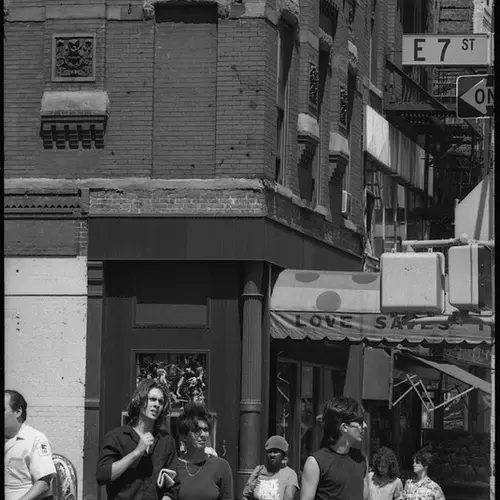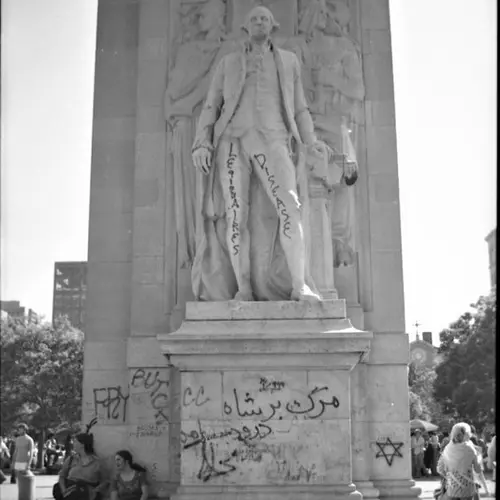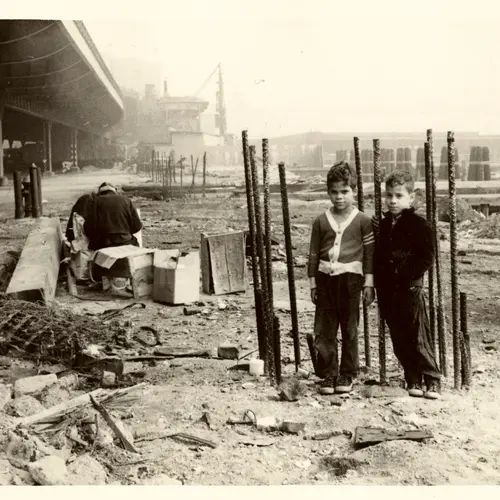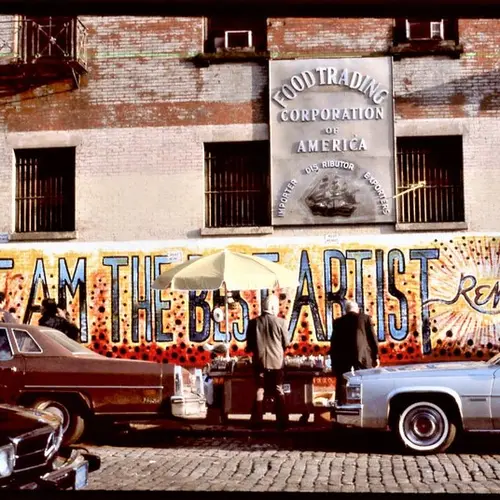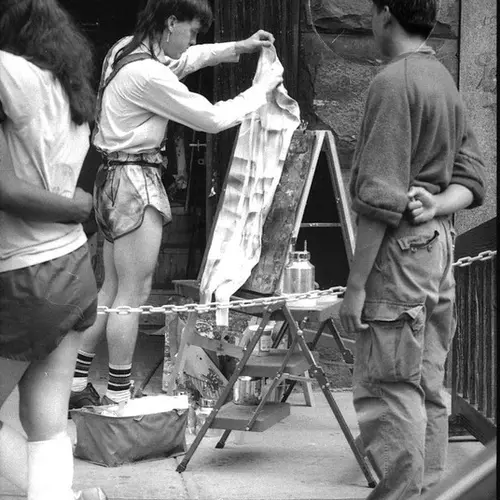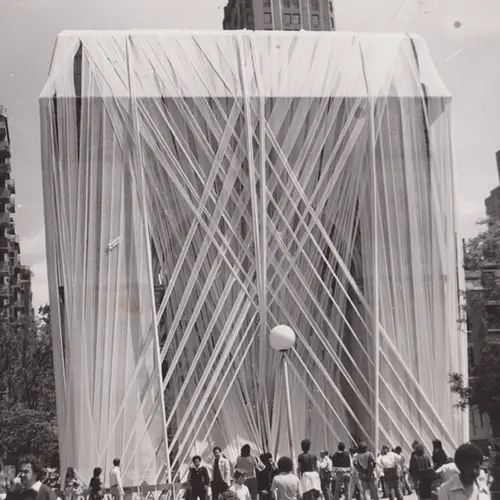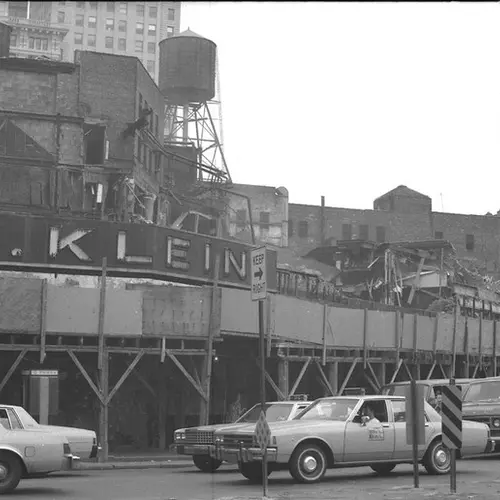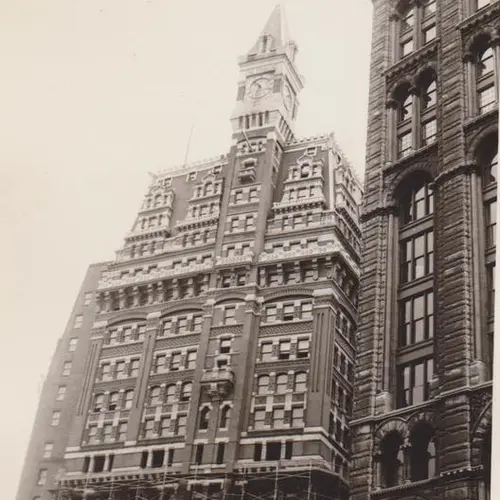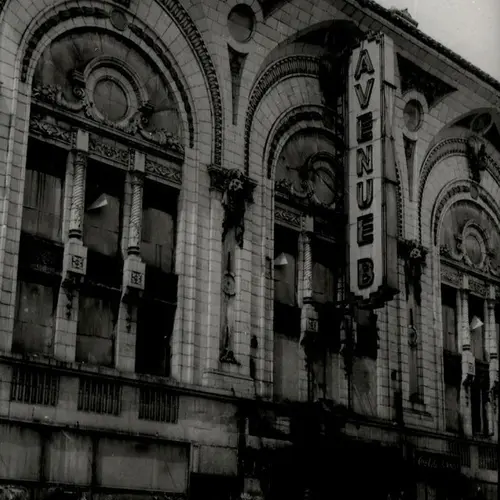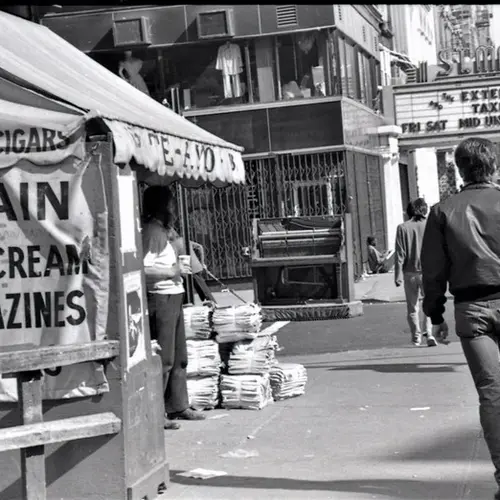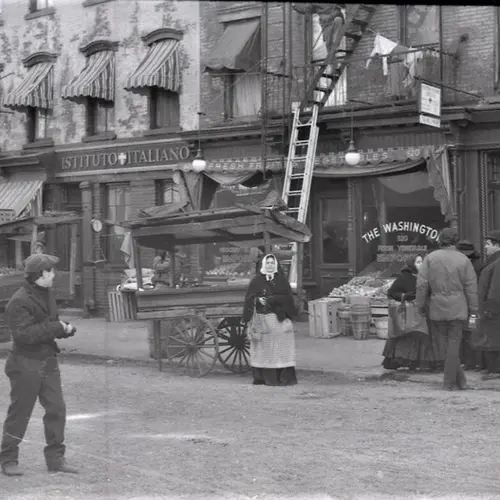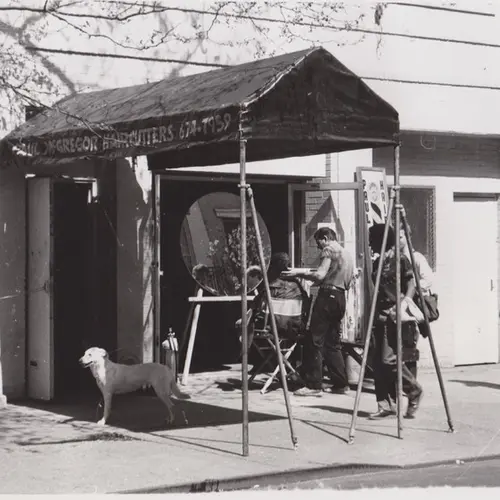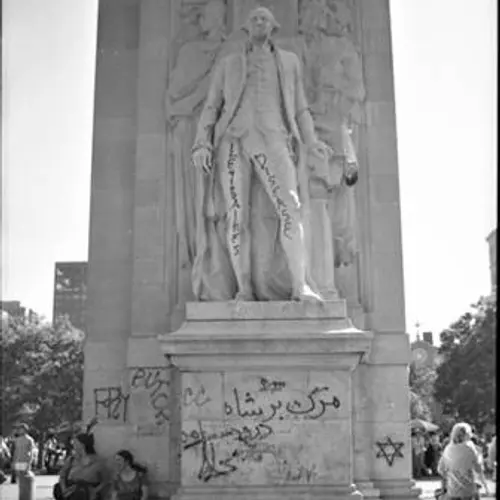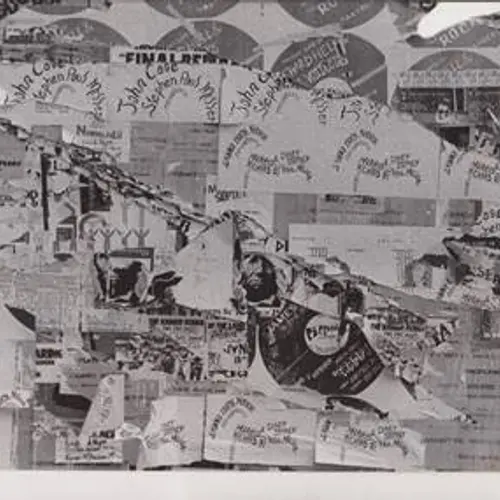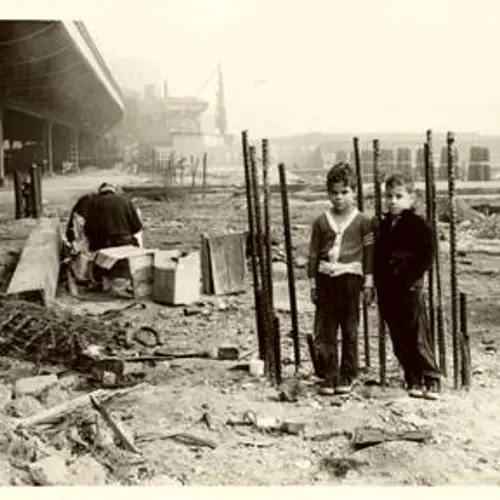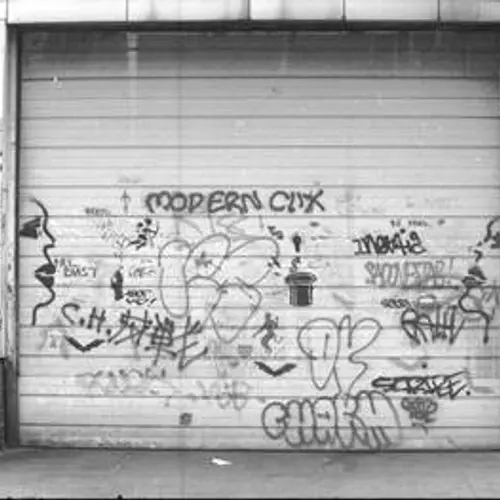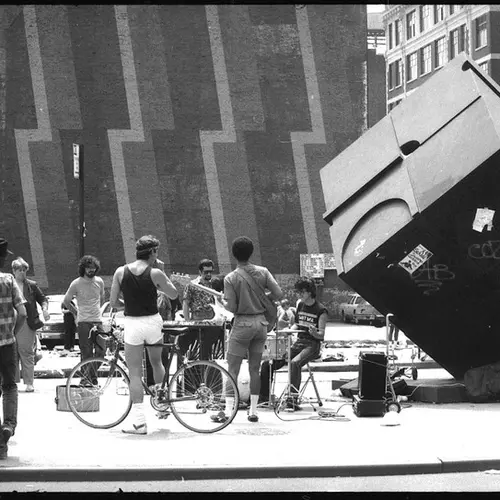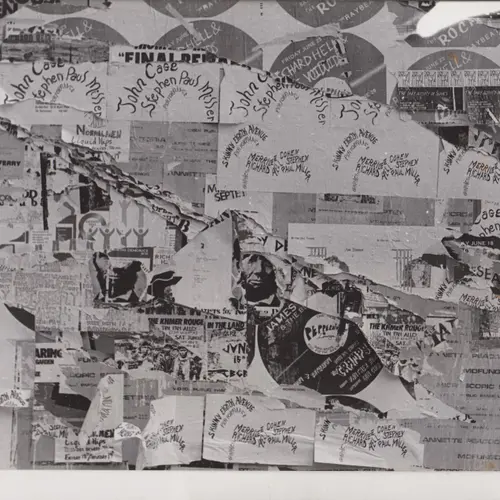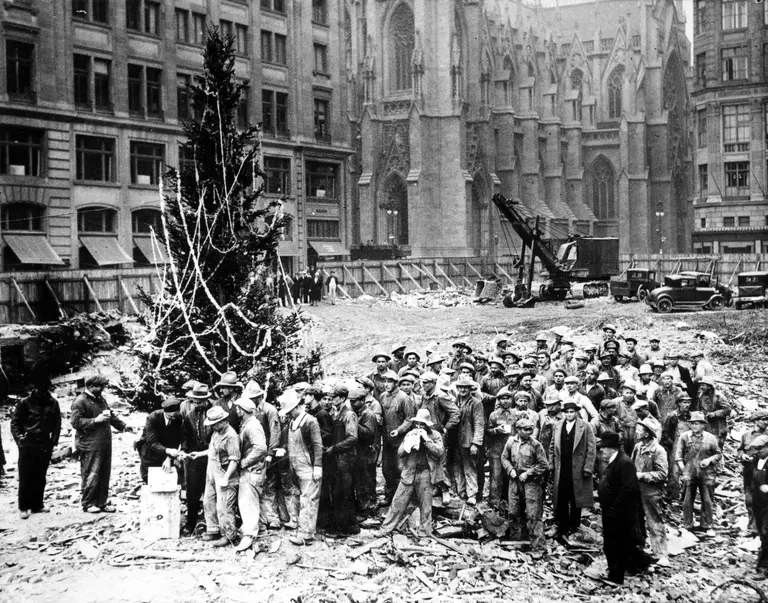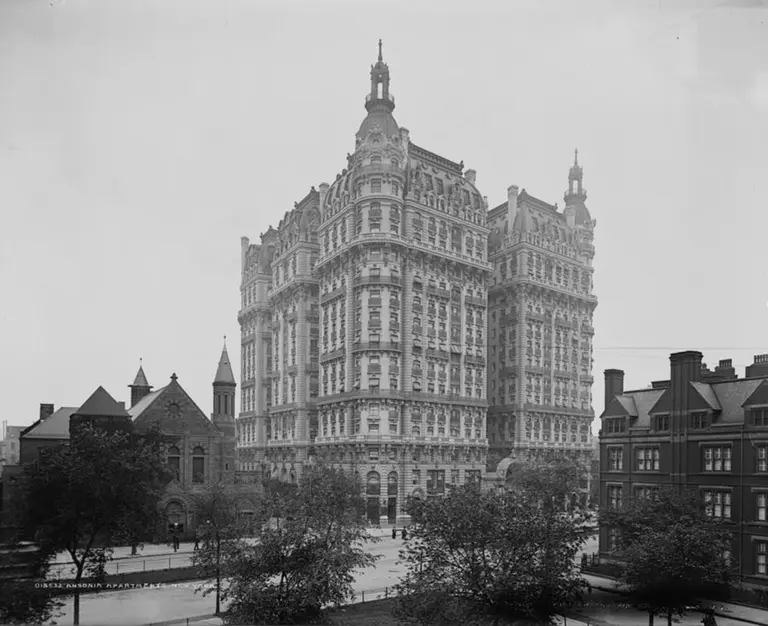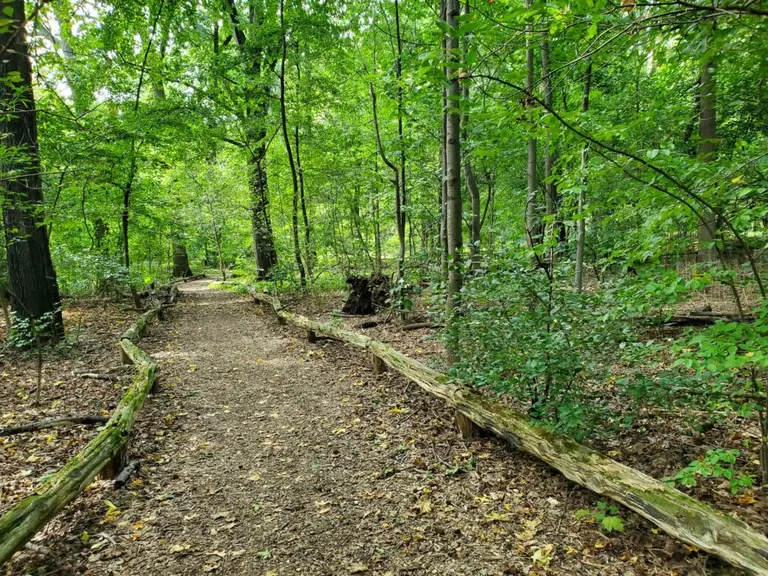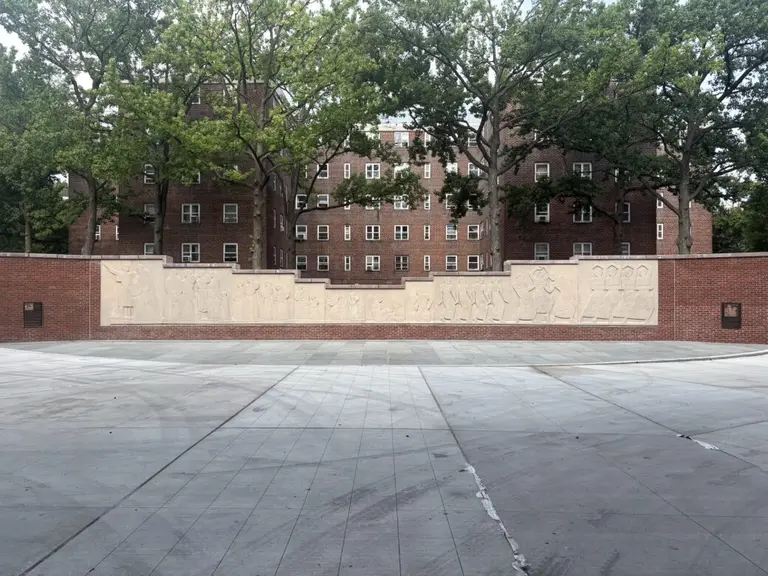Carole Teller’s ‘Changing New York’ captures the city’s 20th-century transformation
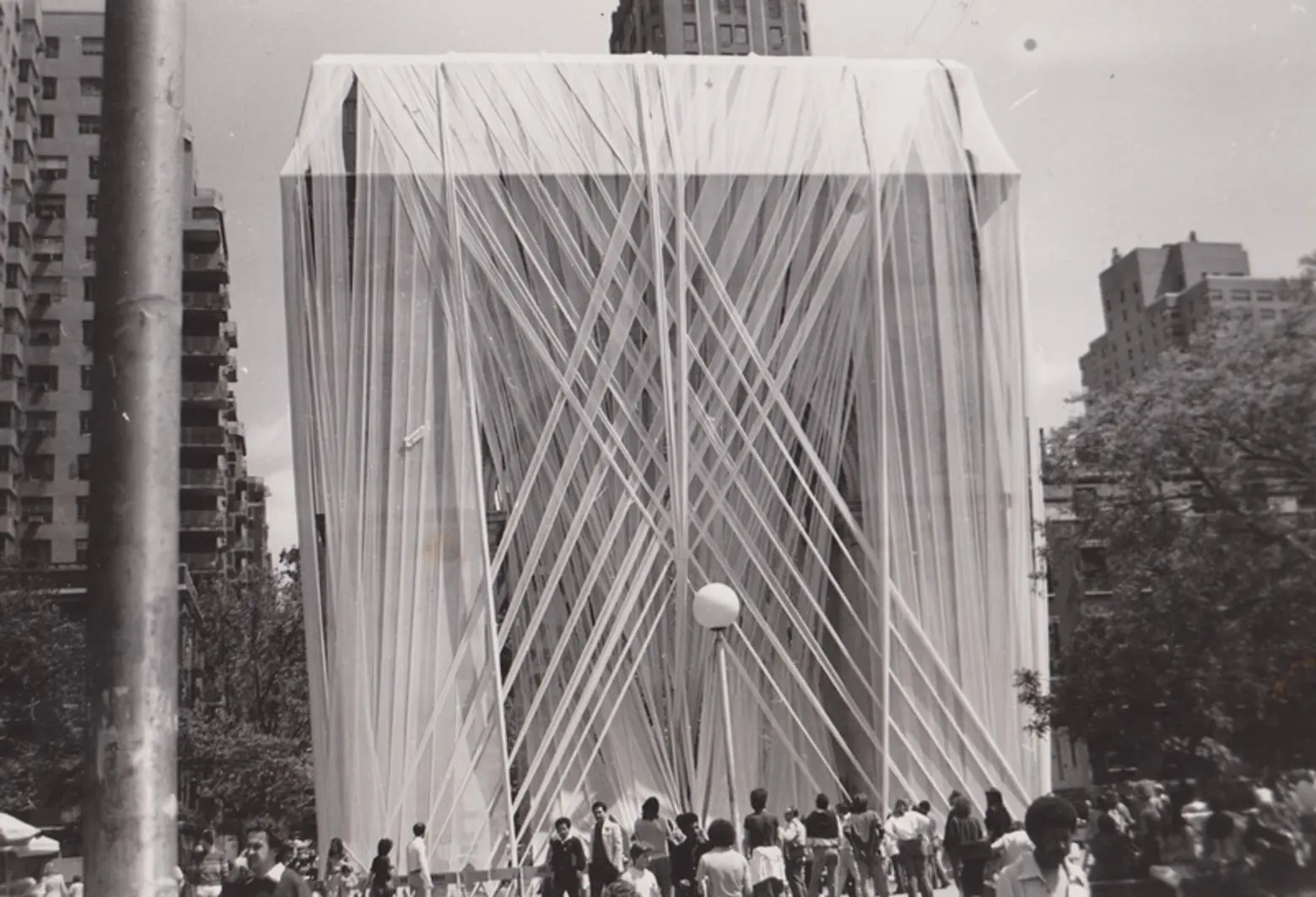
Washington Square Arch wrapped by artist Francis Hines, 1980 © Greenwich Village Society for Historic Preservation/Carole Teller
Change in New York is an expected norm, sometimes so constant it almost goes unnoticed. It’s such an ingrained part of the New Yorker’s experience, we often forget just how much our city has transformed, and what we have left behind. To help us remember, we have Carole Teller. A Brooklyn-born artist who’s lived in the East Village for over 50 years, Carole’s also a photographer with a keen eye for capturing defining elements of New York’s cityscape, especially those on the verge of change or extinction.
Fortunately for us, Carole kept the hundreds of pictures she took scouring the streets of NYC between the early 1960s and early 1990s. She recently unearthed them and shared them with the Greenwich Village Society for Historic Preservation for inclusion in its online Historic Image Archive. What follows are just a few photos from what we call “Carole Teller’s Changing New York.”
A grittier New York
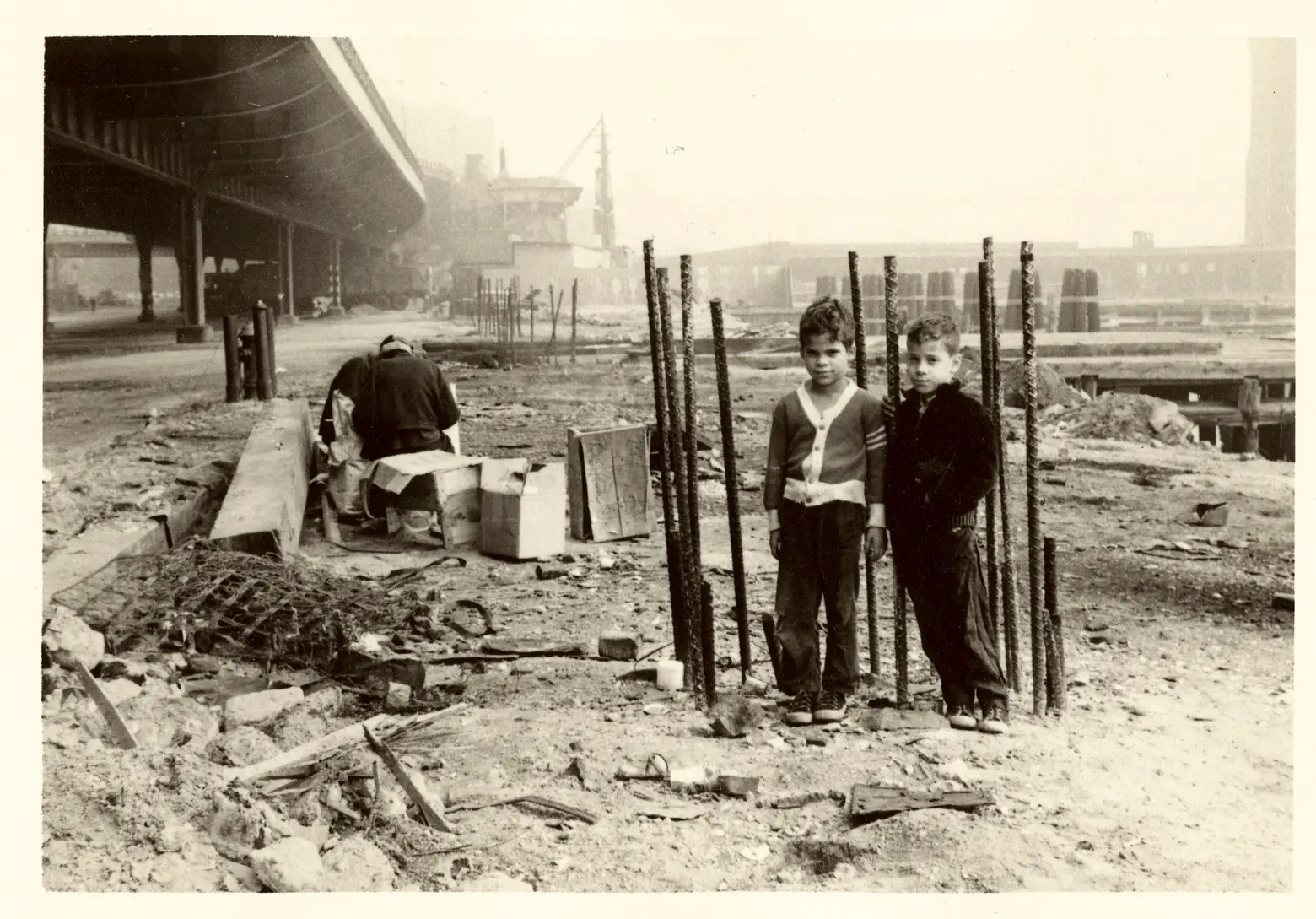 Young boys and homeless men, East River waterfront, looking north, south of the Brooklyn Bridge (near Fulton Street, current site of the South Street Seaport’s Pier 16 & 17) in the early 1960s © Greenwich Village Society for Historic Preservation/Carole Teller
Young boys and homeless men, East River waterfront, looking north, south of the Brooklyn Bridge (near Fulton Street, current site of the South Street Seaport’s Pier 16 & 17) in the early 1960s © Greenwich Village Society for Historic Preservation/Carole Teller
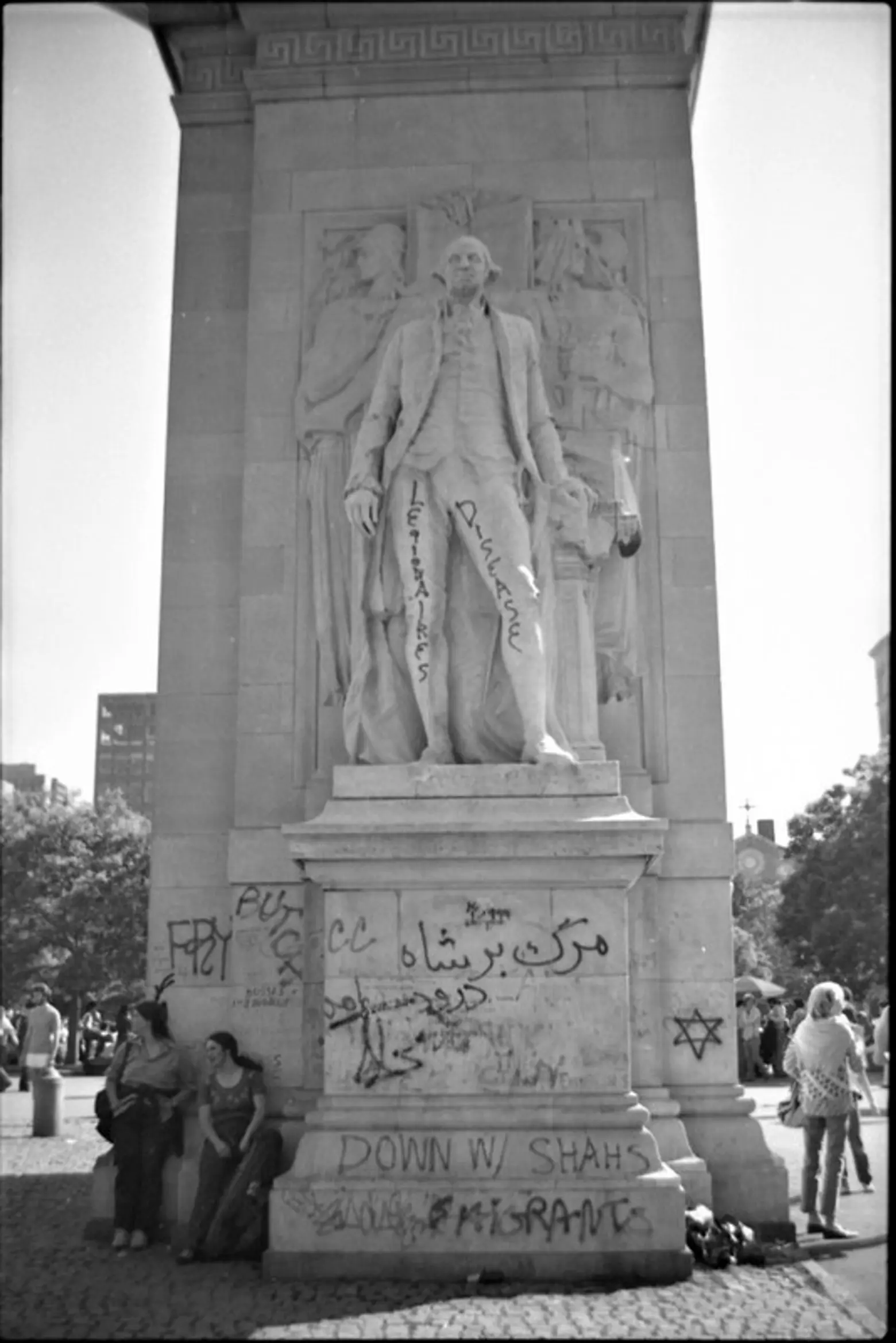 Washington Square Arch & George Washington Statue, from north side with graffiti c. 1980 © Greenwich Village Society for Historic Preservation/Carole Teller
Washington Square Arch & George Washington Statue, from north side with graffiti c. 1980 © Greenwich Village Society for Historic Preservation/Carole Teller
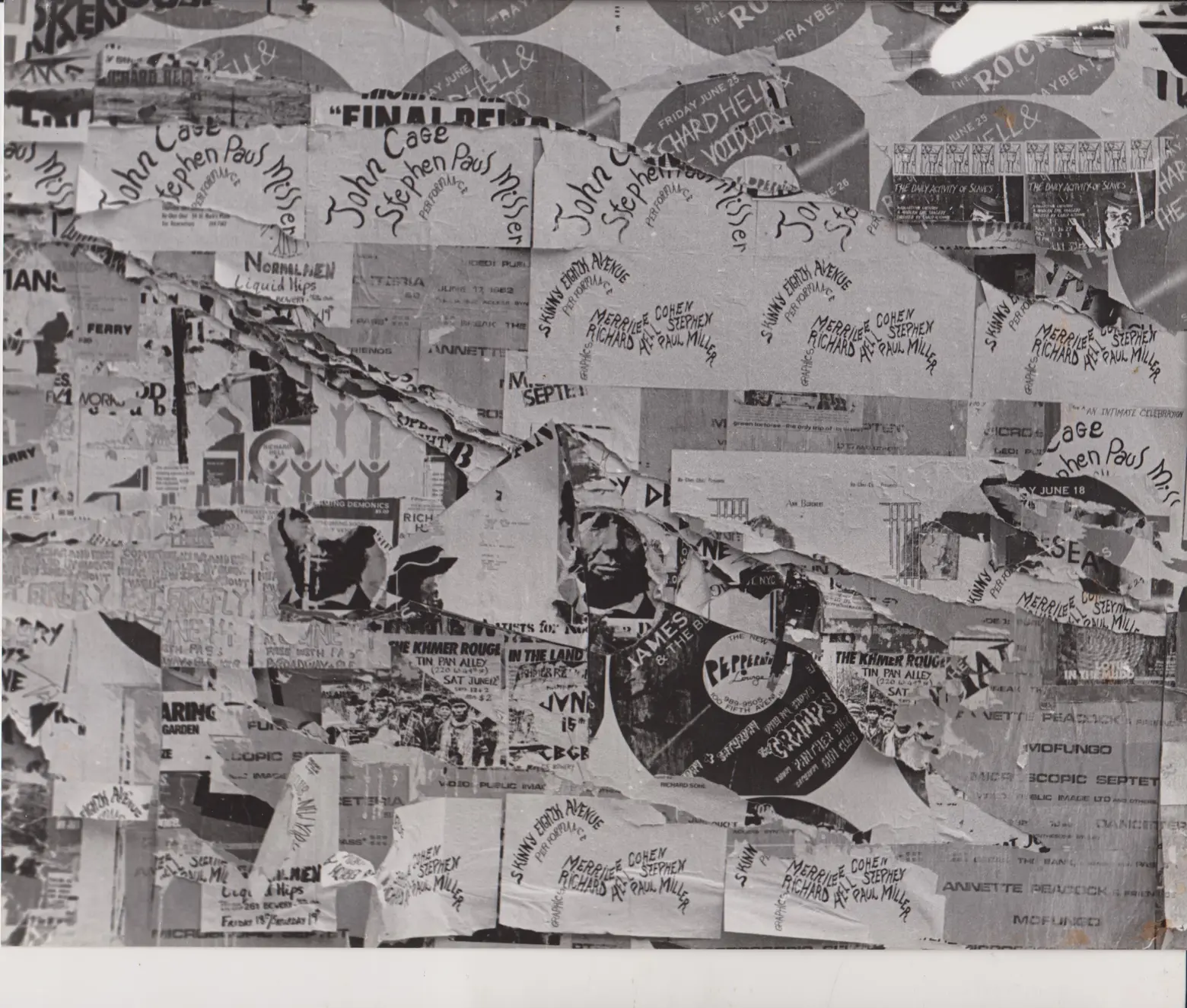 John Cage, Richard Hell & the Voidoids, James White and the Blacks, the Cramps etc. (location unknown, probably East Village) c. 1982 © Greenwich Village Society for Historic Preservation/Carole Teller
John Cage, Richard Hell & the Voidoids, James White and the Blacks, the Cramps etc. (location unknown, probably East Village) c. 1982 © Greenwich Village Society for Historic Preservation/Carole Teller
There’s no denying that New York City has lost a layer or two of dirt, grit, and grime over the last few decades; parts of the city which have now been scrubbed clean once enjoyed a much less wholesome appearance or reputation. Carole captured many of these places in their pre-metamorphosis state, with sometimes evocative reminders of how differently our city looked and felt in the not-too-distant past. Some examples from her collection include a graffiti-covered Washington Square Arch, a tagged-up doorway in NoHo, an East Village wall plastered with layers of flyers, and a homeless man and two wayward boys on a deserted East River waterfront, present-day location of the South Street Seaport.
A less well-preserved New York
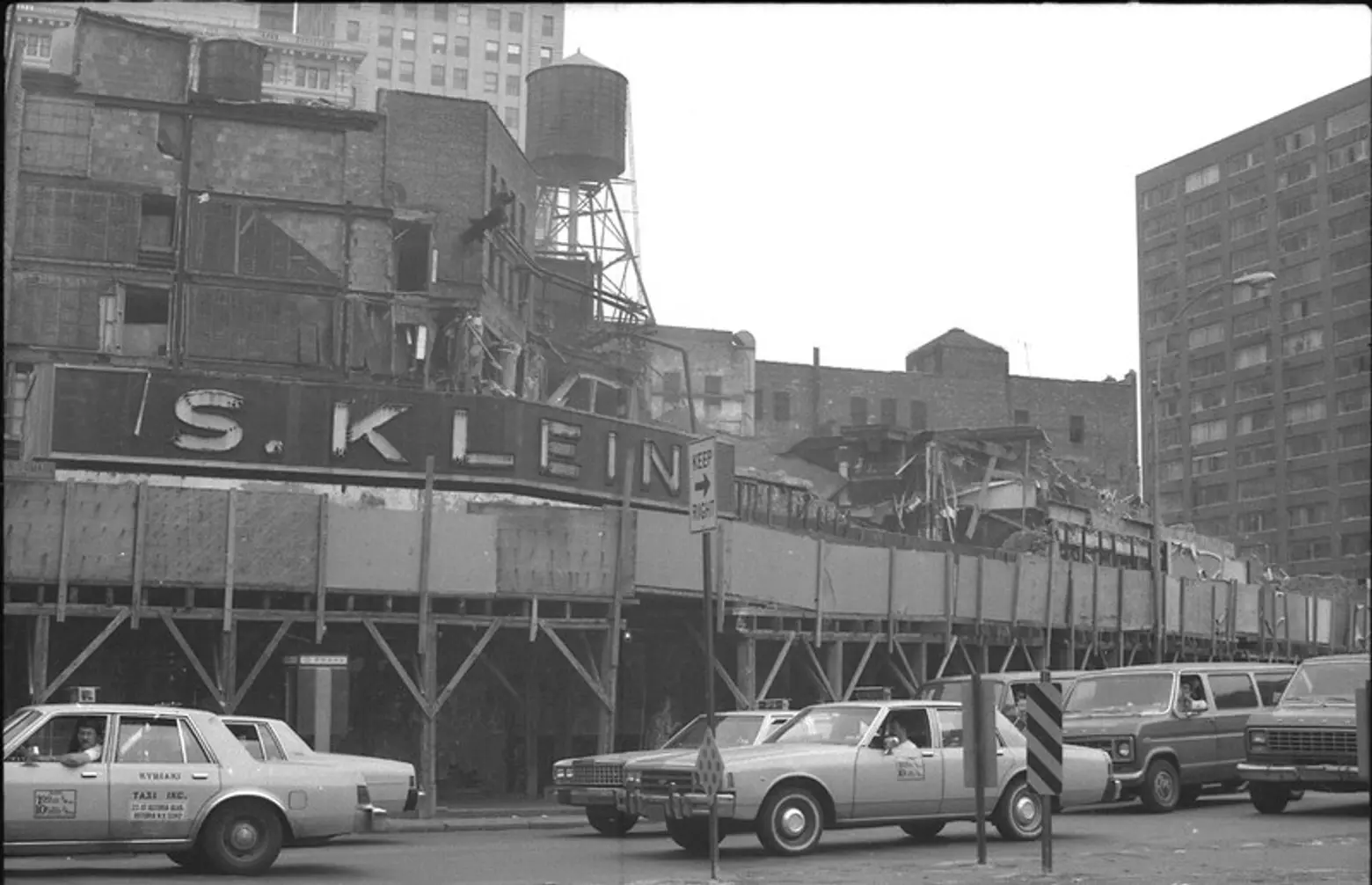 S. Klein Department Store being demolished, northeast corner of 14th Street & Union Square East © Greenwich Village Society for Historic Preservation/Carole Teller
S. Klein Department Store being demolished, northeast corner of 14th Street & Union Square East © Greenwich Village Society for Historic Preservation/Carole Teller
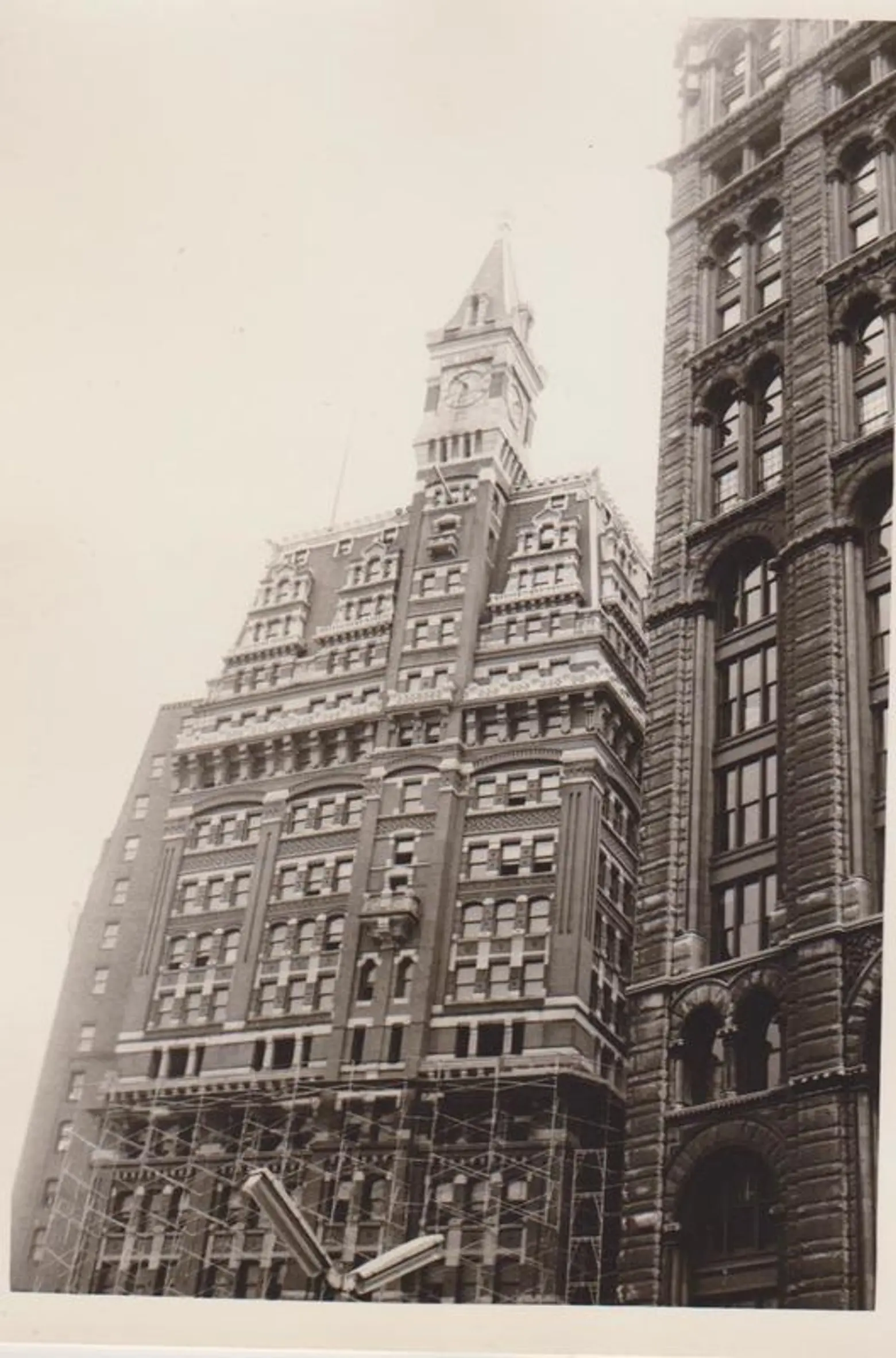 NY Tribune Building, Nassau & Spruce Street, demolished 1966 for 1 Pace Plaza © Greenwich Village Society for Historic Preservation/Carole Teller
NY Tribune Building, Nassau & Spruce Street, demolished 1966 for 1 Pace Plaza © Greenwich Village Society for Historic Preservation/Carole Teller
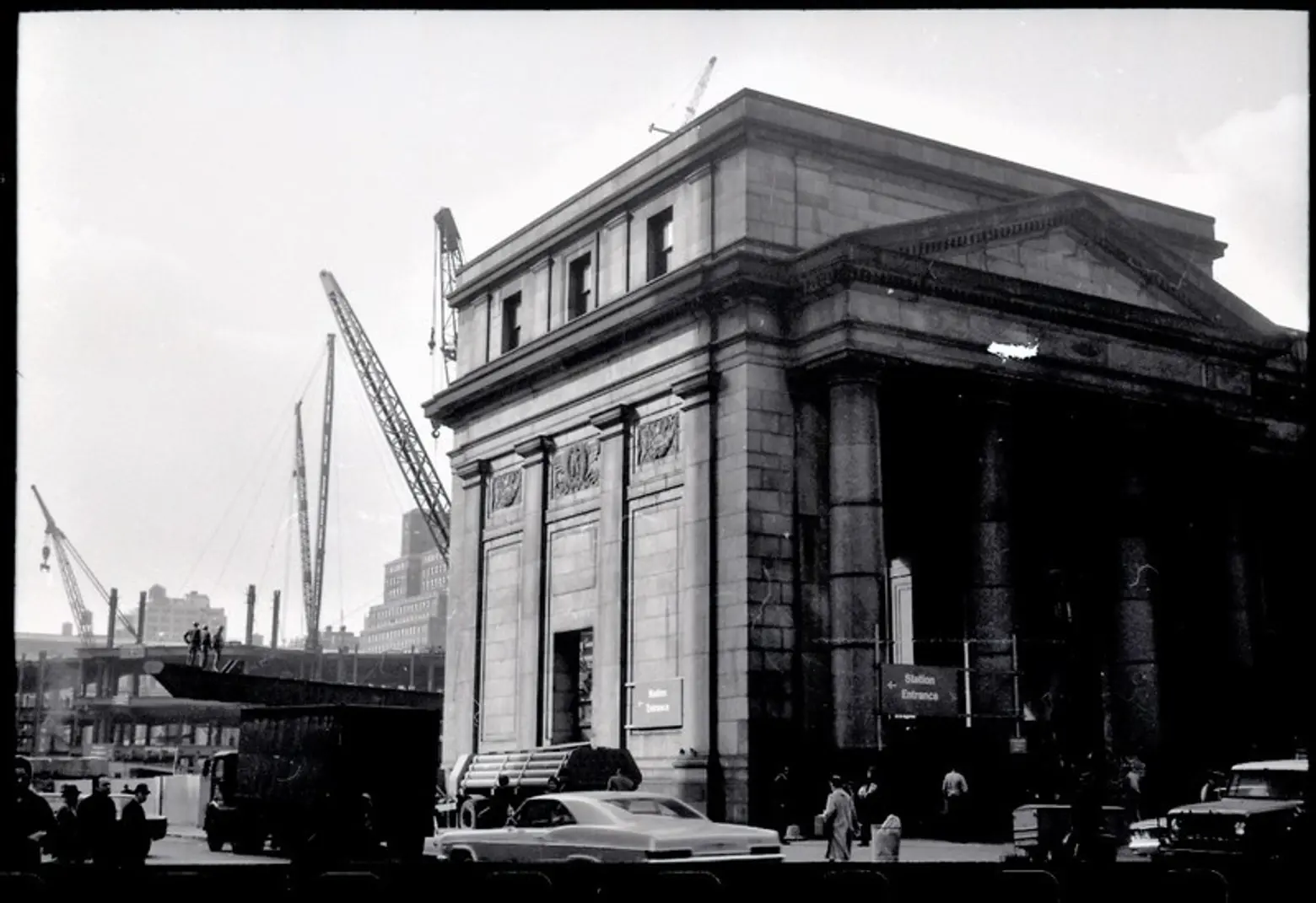 Penn Station being demolished © Greenwich Village Society for Historic Preservation/Carole Teller
Penn Station being demolished © Greenwich Village Society for Historic Preservation/Carole Teller
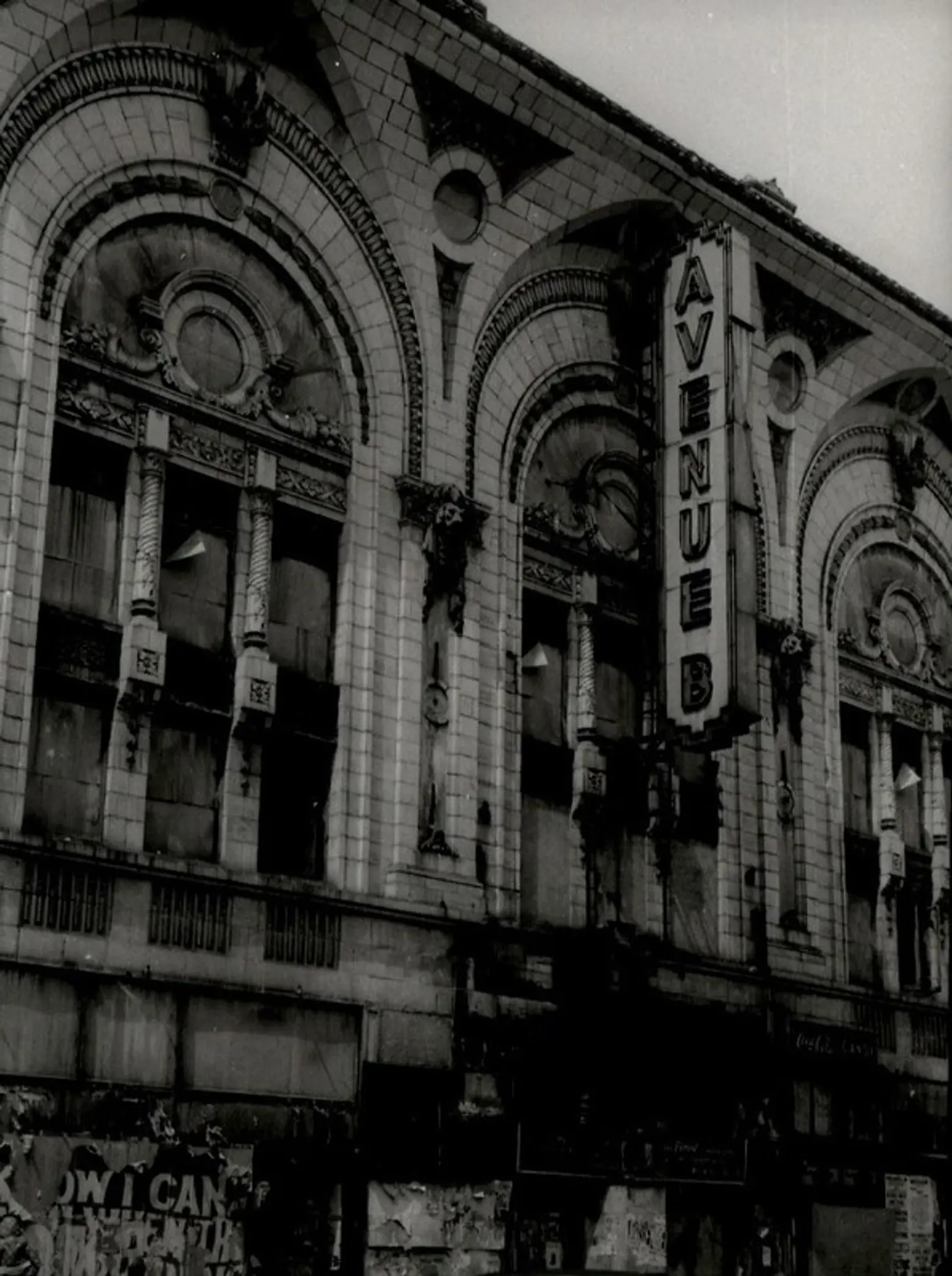 Loew’s Avenue B Theater, 62-66 Avenue B, southwest corner of 5th Street; demolished in 1968 © Greenwich Village Society for Historic Preservation/Carole Teller
Loew’s Avenue B Theater, 62-66 Avenue B, southwest corner of 5th Street; demolished in 1968 © Greenwich Village Society for Historic Preservation/Carole Teller
The decades of the late 20th century saw the loss of some of New York’s most iconic and beloved landmarks, spurring the adoption of New York’s landmarks law and the creation of the New York City Landmarks Preservation Commission. Carole captured a hollowed out Penn Station; the Richard Morris Hunt-designed New York Tribune Building (1875), once the second tallest building in New York; the majestic Loew’s Avenue B Theater; and S. Klein’s Department Store on Union Square — all in the process of being demolished.
A more cinematic New York
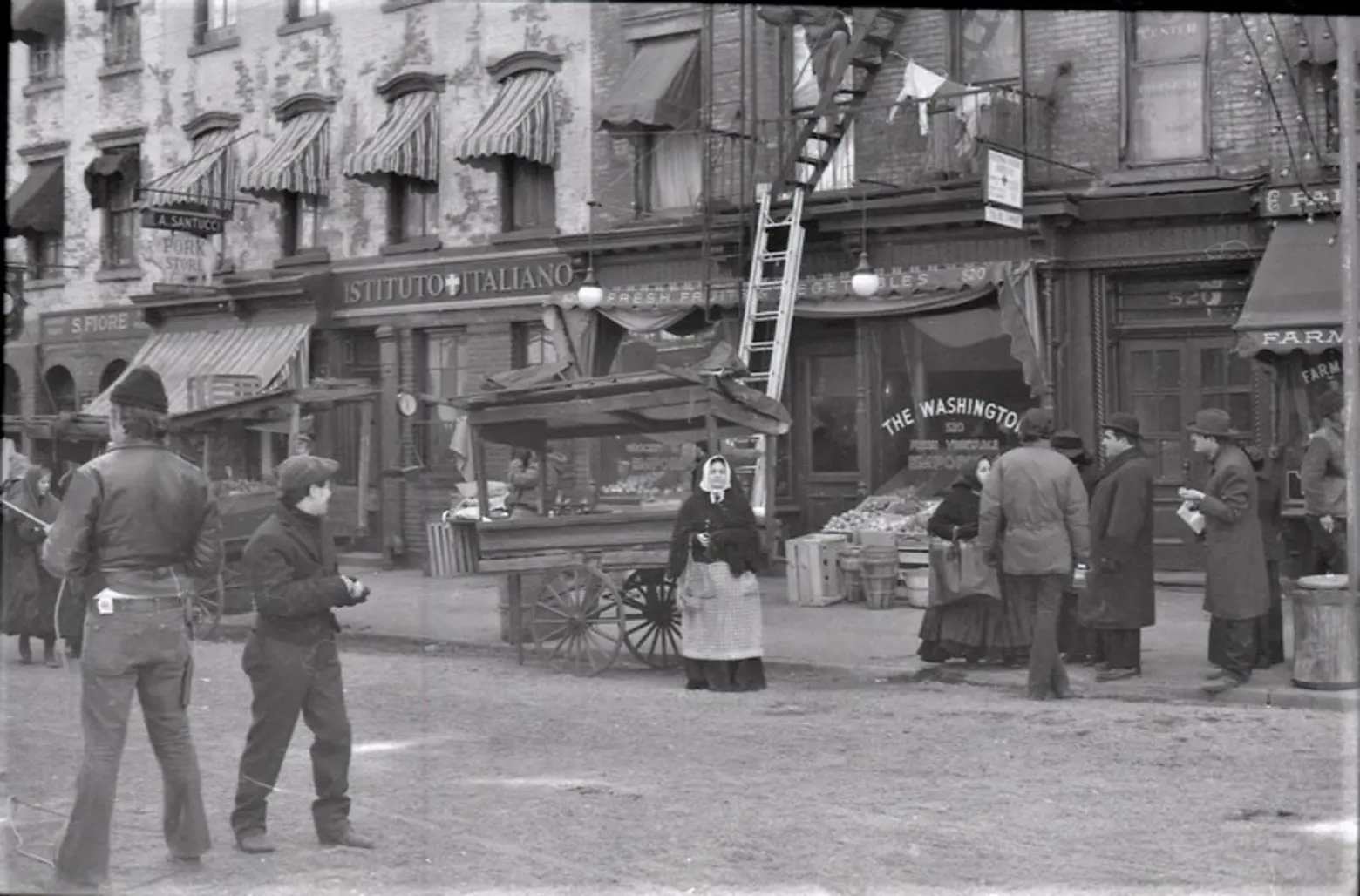 Filming “The Godfather Part II” on East 6th Street between Avenues A & B © Greenwich Village Society for Historic Preservation/Carole Teller
Filming “The Godfather Part II” on East 6th Street between Avenues A & B © Greenwich Village Society for Historic Preservation/Carole Teller
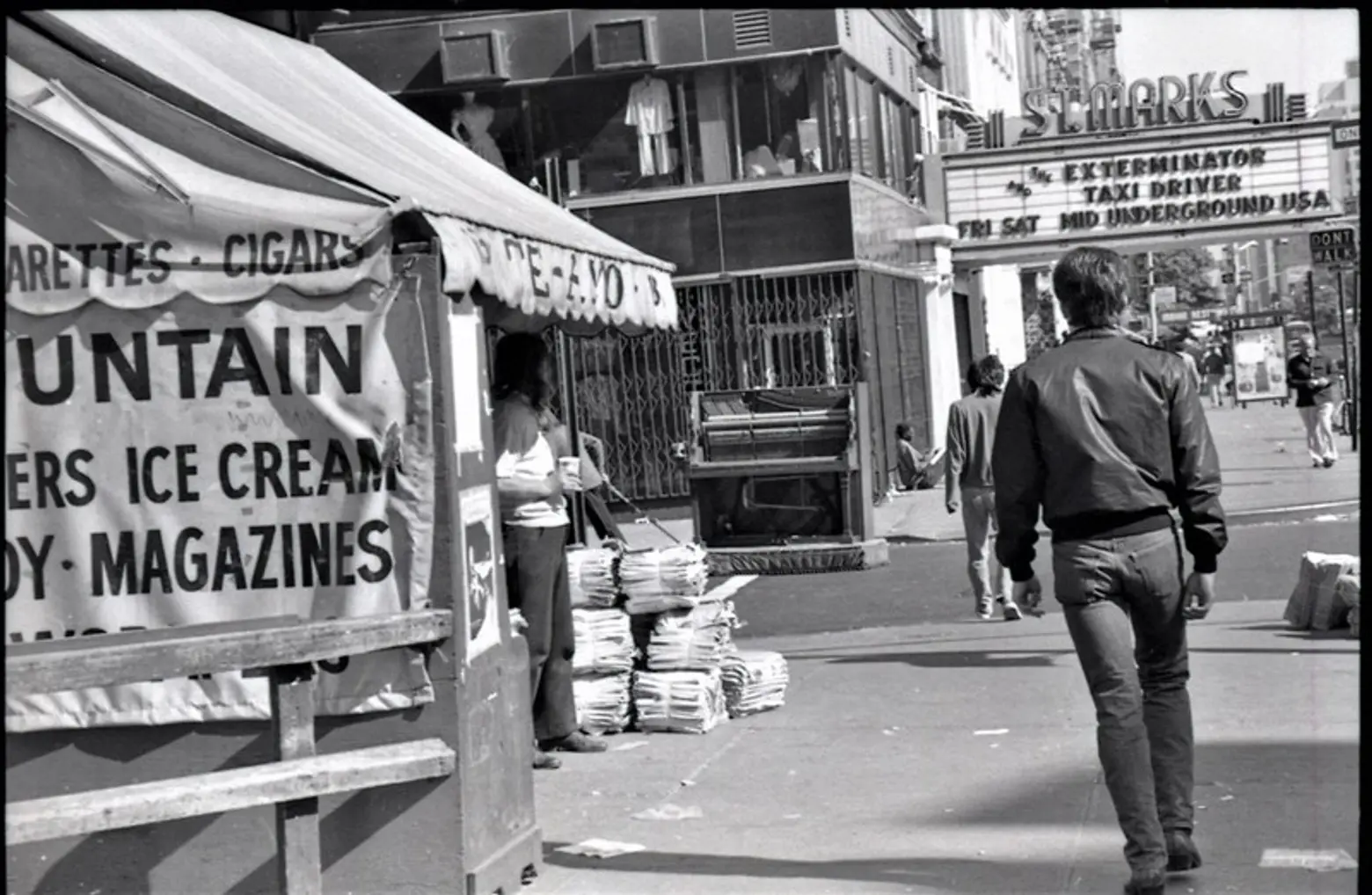 131 & 133 2nd Avenue, west side north and south of St. Mark’s Place, with St. Mark’s Theater “Taxi Driver” © Greenwich Village Society for Historic Preservation/Carole Teller
131 & 133 2nd Avenue, west side north and south of St. Mark’s Place, with St. Mark’s Theater “Taxi Driver” © Greenwich Village Society for Historic Preservation/Carole Teller
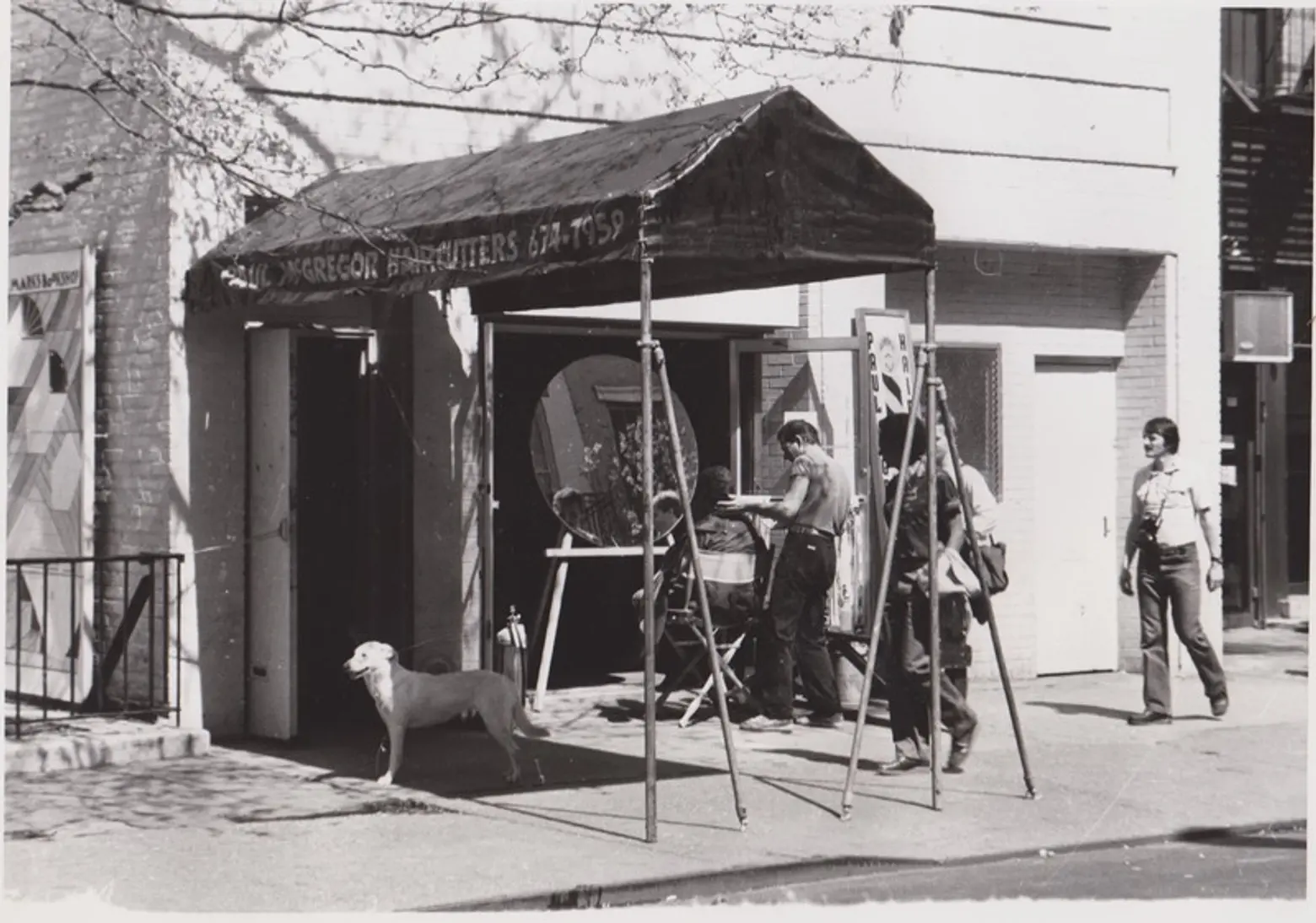 15 St. Mark’s Place © Greenwich Village Society for Historic Preservation/Carole Teller
15 St. Mark’s Place © Greenwich Village Society for Historic Preservation/Carole Teller
The 1970s were a golden era for film in New York, as a new wave of directors sought to capture the gritty reality of life on the city’s streets. Carole caught Francis Ford Coppola transforming East 6th Street into turn-of-the-20th century Little Italy for the “Godfather Part II” in 1971. She also snapped an image of “Taxi Driver” playing at the old St. Mark’s Theater on Second Avenue just footsteps from where much of the movie was filmed; the image which mirrors the original “Taxi Driver” movie poster showing De Niro’s Travis Bickle walking down a New York street with a movie theater marque behind him. Carole also photographed Paul McGregor’s Haircutter’s at 15 St. Mark’s Place, where the “shag” haircut was invented, and which was the inspiration for the movie “Shampoo.”
A very artistic New York
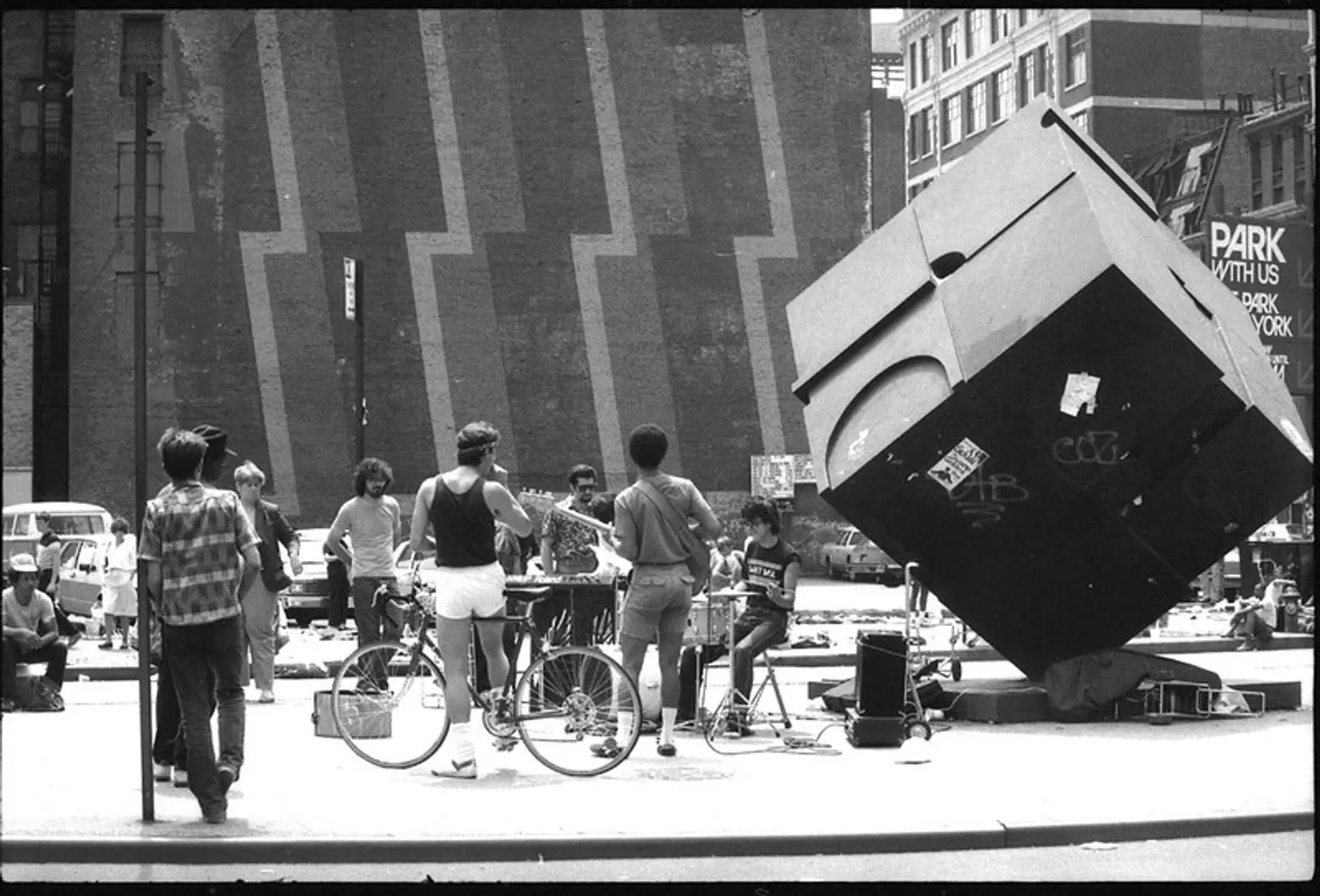
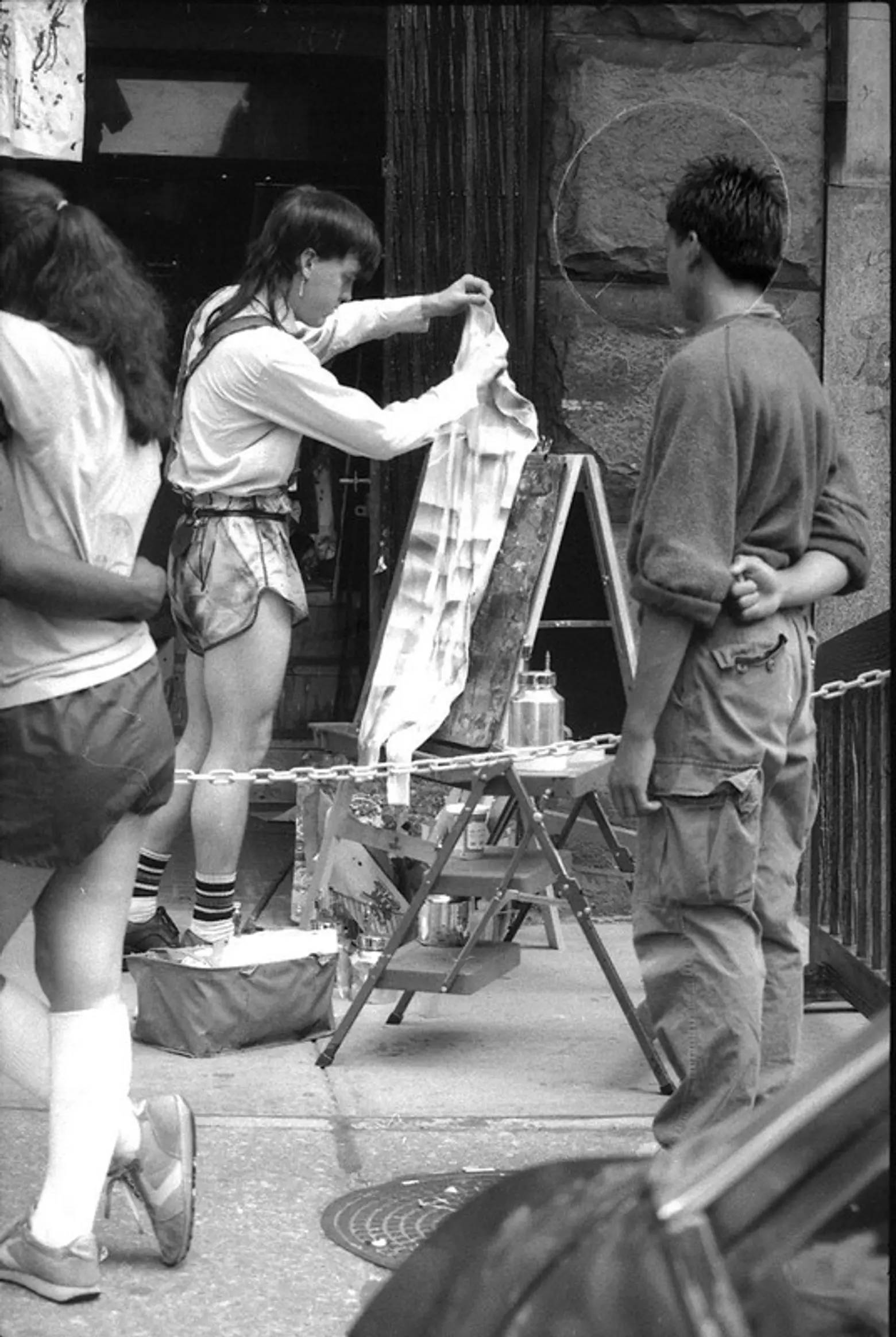

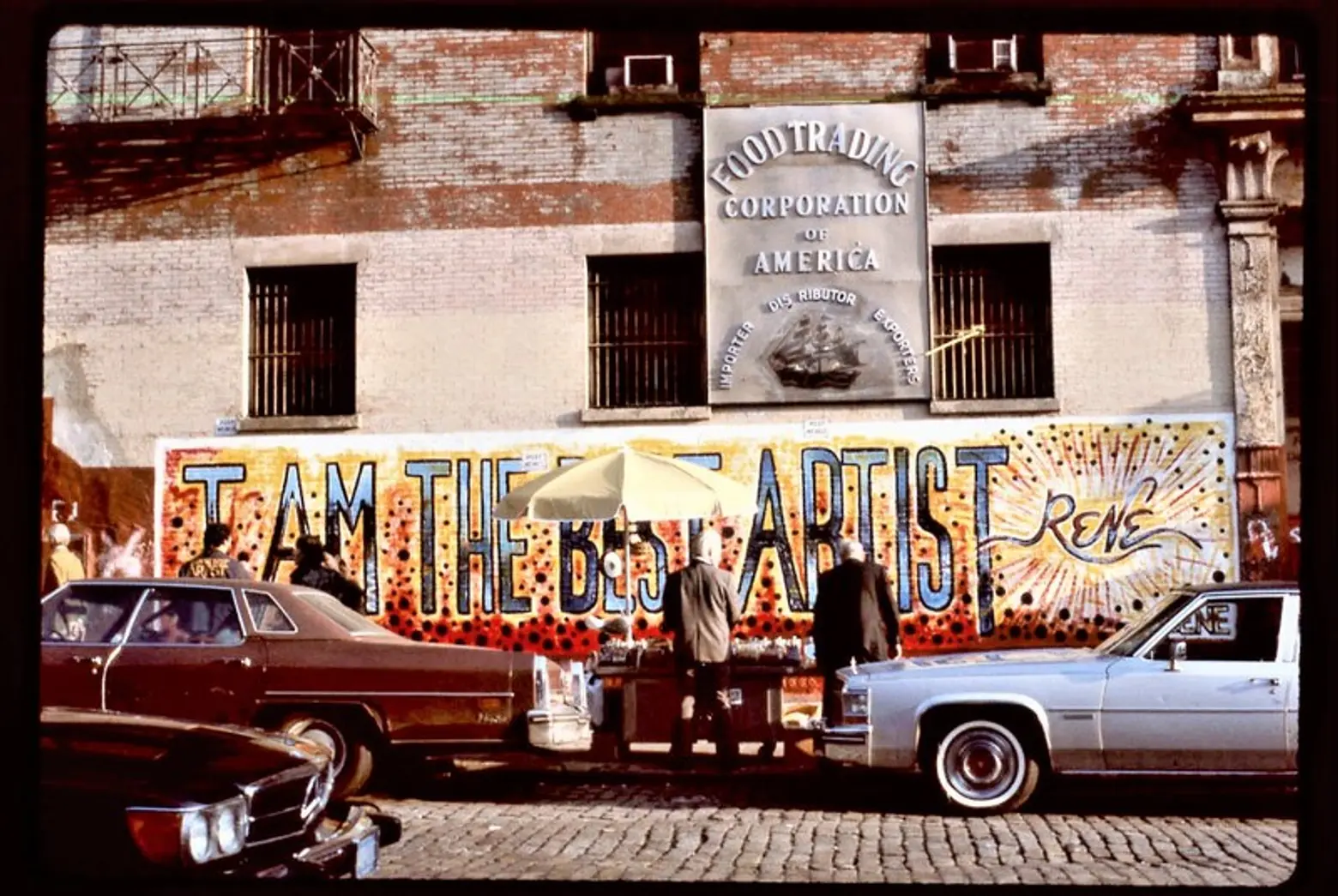 500 Broome Street, West Broadway side of building, northeast corner “I am the Best Artist” mural, by Rene © Greenwich Village Society for Historic Preservation/Carole Teller
500 Broome Street, West Broadway side of building, northeast corner “I am the Best Artist” mural, by Rene © Greenwich Village Society for Historic Preservation/Carole Teller
Carole captured artists both well-known and anonymous, along with their works of art all around the streets of New York. This was a period when New York was investing heavily in public art and artists were transforming neighborhoods others had left behind. Examples include Washington Square Arch wrapped in cloth by the artist Francis Hines in 1980; Astor Place’s ‘The Alamo’ (aka ‘The Cube’) with a wall mural as backdrop, and a street band and bicyclists as foreground figures; the artist Rene’s “I am the best artist” mural in SoHo; and a street artist producing his wares on the sidewalk.
An Italian-American New York
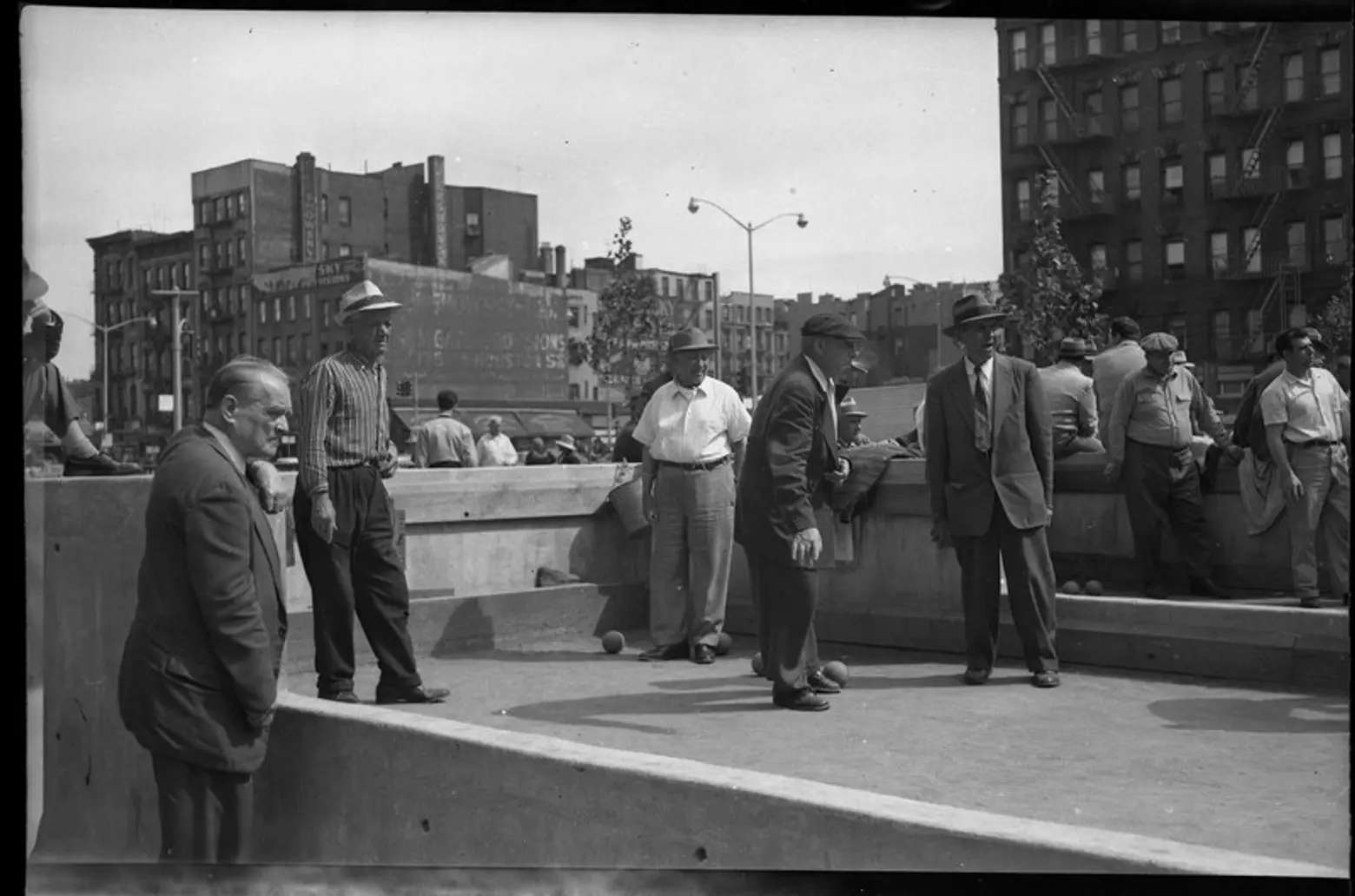 Bocce Court at First Park, from 1st Street west of 1st Avenue looking southeast © Greenwich Village Society for Historic Preservation/Carole Teller
Bocce Court at First Park, from 1st Street west of 1st Avenue looking southeast © Greenwich Village Society for Historic Preservation/Carole Teller
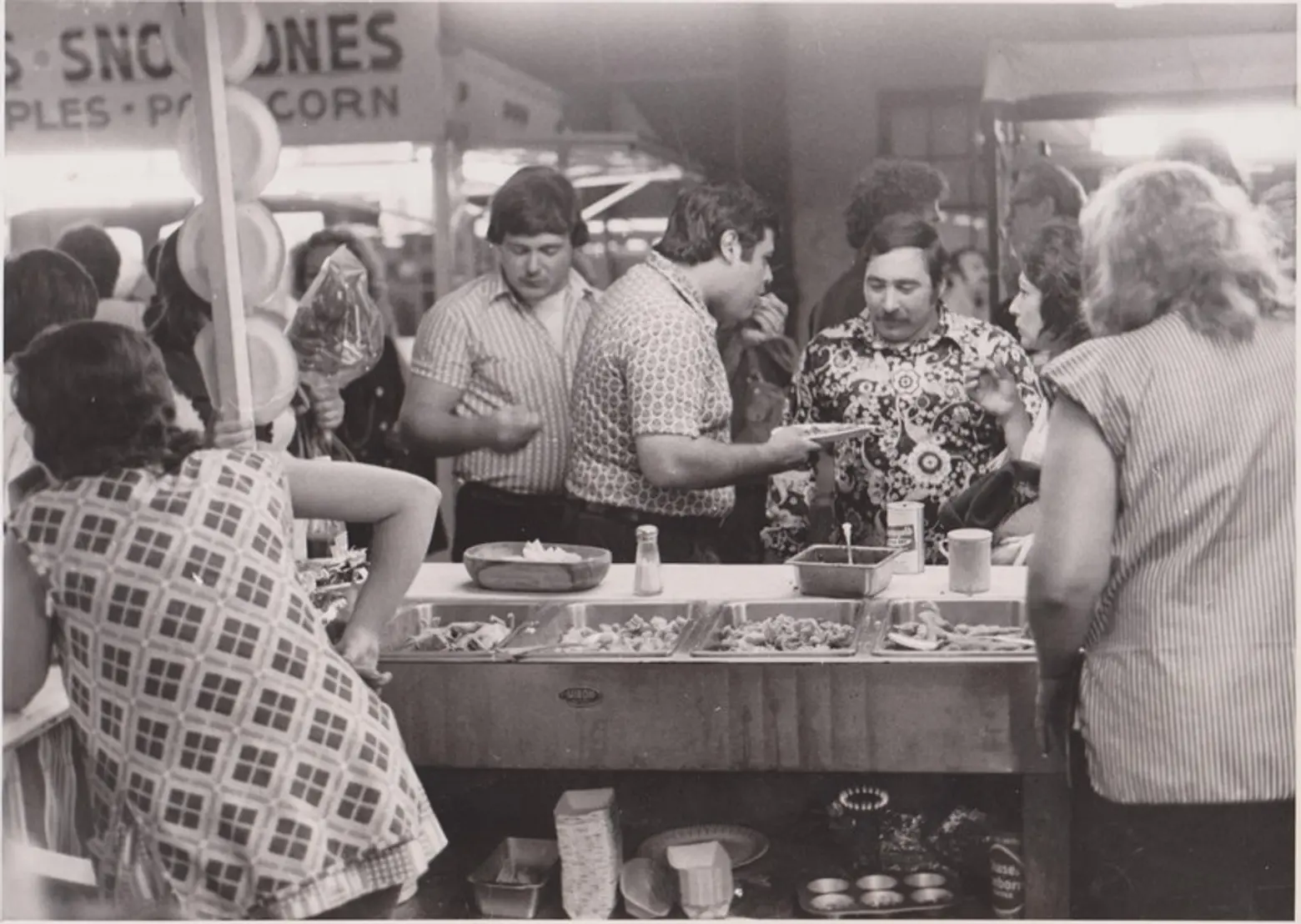 Festival of San Gennaro © Greenwich Village Society for Historic Preservation/Carole Teller
Festival of San Gennaro © Greenwich Village Society for Historic Preservation/Carole Teller
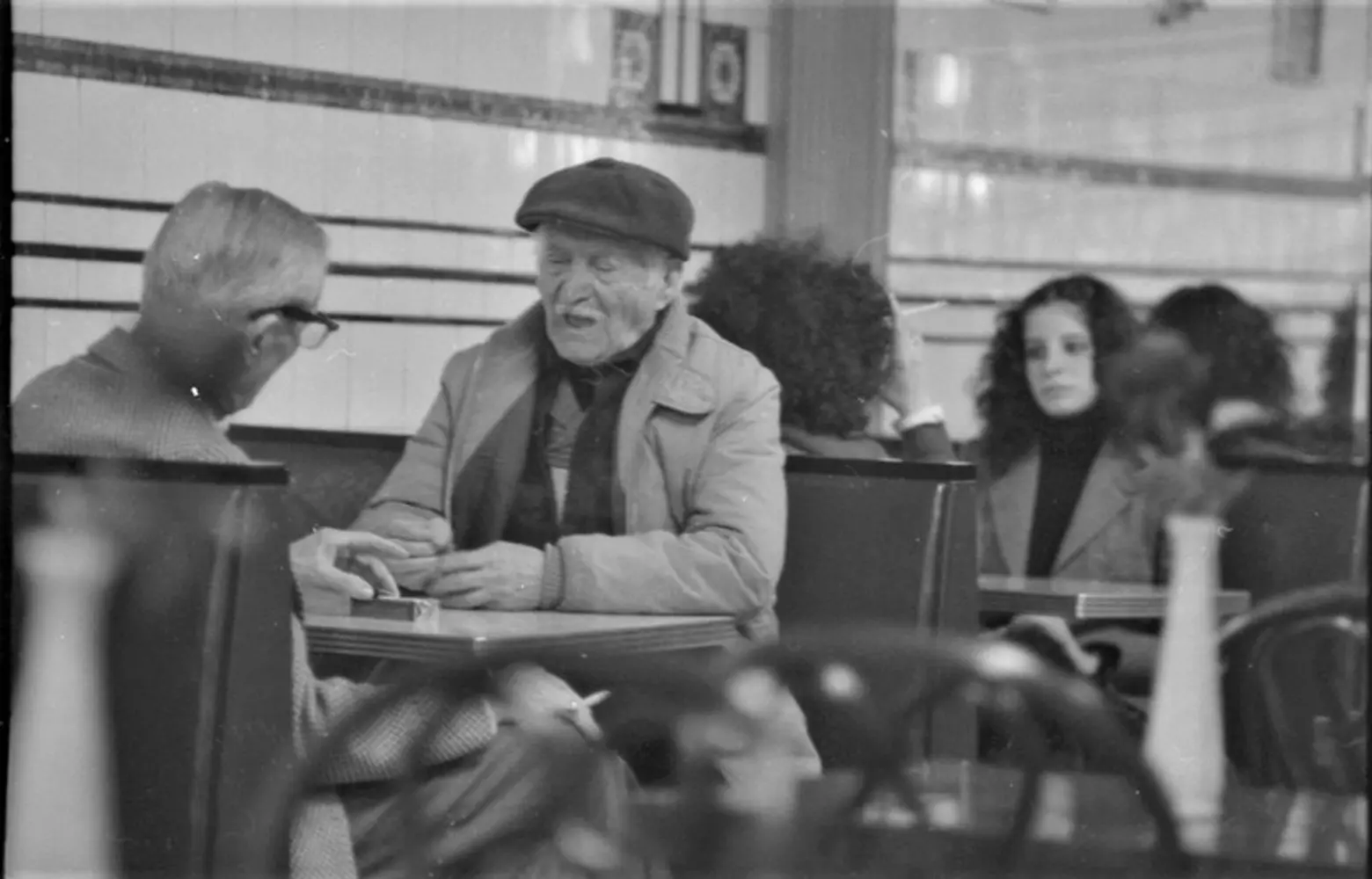 De Robertis Pasticceria © Greenwich Village Society for Historic Preservation/Carole Teller
De Robertis Pasticceria © Greenwich Village Society for Historic Preservation/Carole Teller
For much of the late 20th century, Italian-Americans comprised the single largest ethnic group in New York City, and their vibrant presence could certainly be felt in Lower Manhattan. Carole frequently captured the bocce players in the small park on First Avenue and First Street (the bocce courts are gone, though the park remains), as well as revelers at the Feast of San Genaro. She also snapped images of the café in the back of the venerable De Robertis Pasticceria on First Avenue, which closed its doors after 110 years in 2014.
A more well-read New York

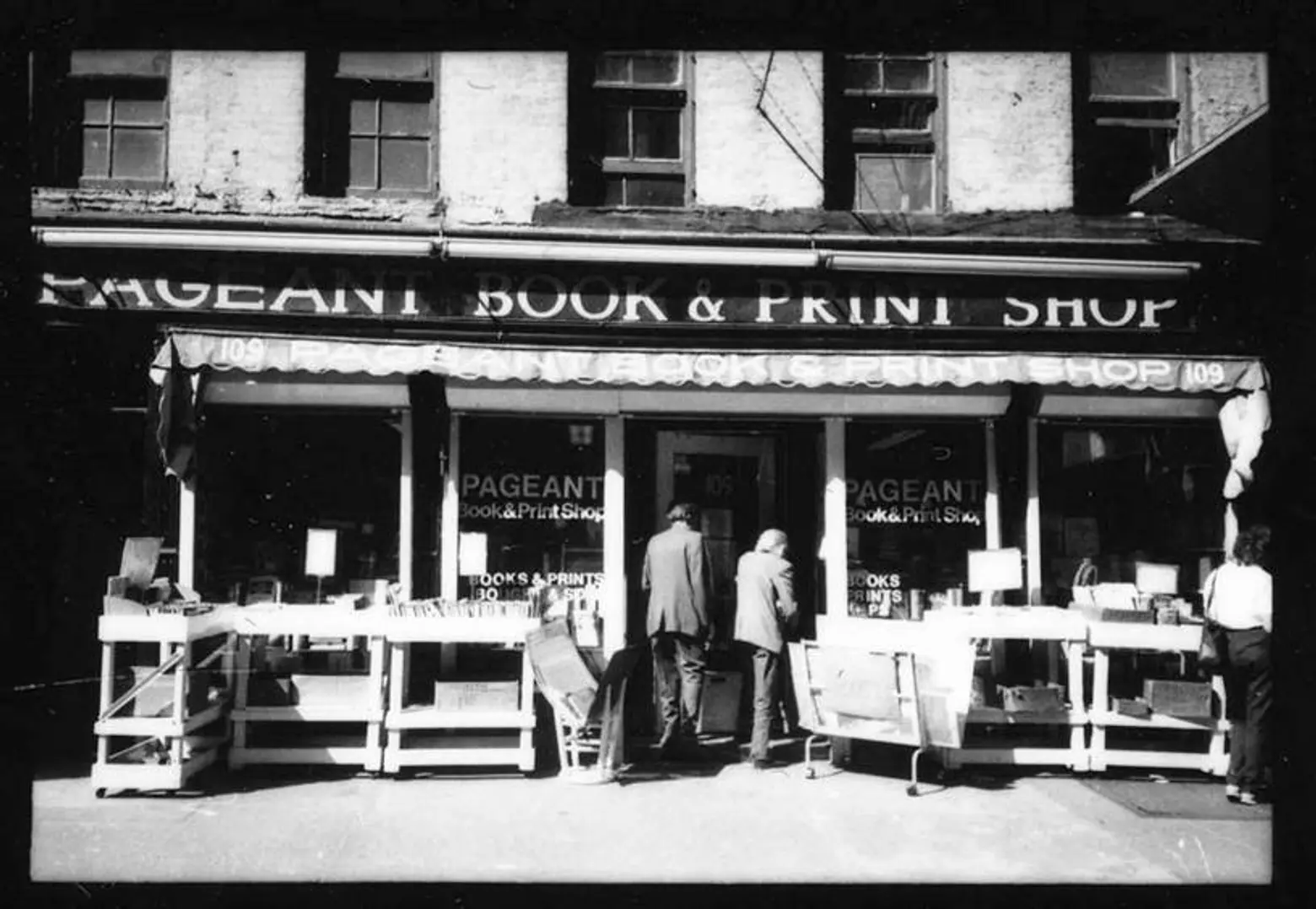
New York used to be a book lover’s paradise, especially along Fourth Avenue south of Union Square, which was known as ‘Book Row.’ Two of the long-gone greats were Fourth Avenue Books, located where the Hyatt Union Square can now be found on Fourth Avenue and 13th Street, and Pageant Bookstore on 9th Street between 3rd and 4th Avenues, where Michael Caine and Barbara Hershey shopped for ee cummings poetry in ‘Hannah and Her Sister’ (Pageant actually retains an online presence and a smaller brick and mortar shop on East 4th Street).
A New York that chants more
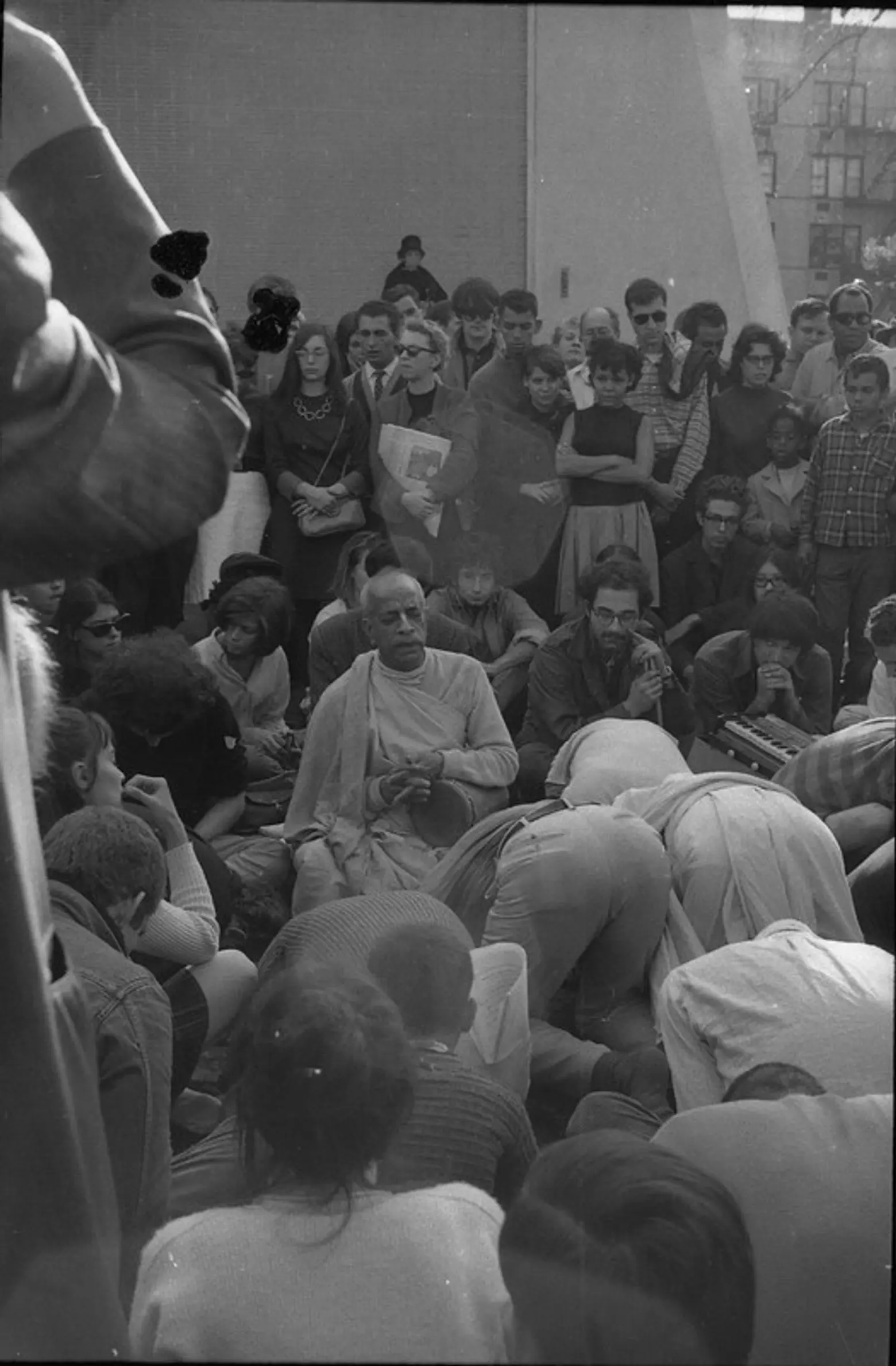
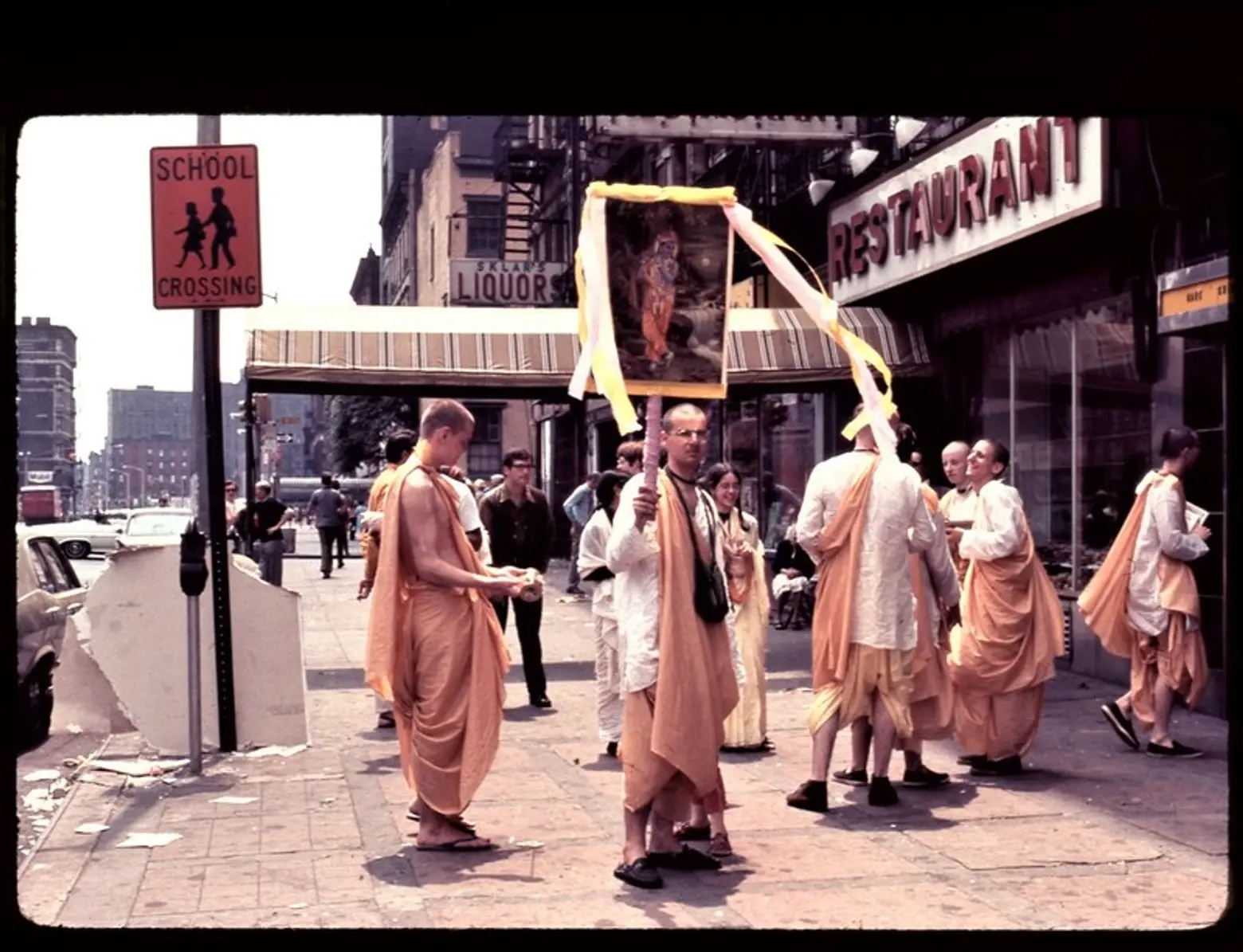 Hare Krishnas dancing on 2nd Avenue, west side between 2nd & 3rd Streets, looking south © Greenwich Village Society for Historic Preservation/Carole Teller
Hare Krishnas dancing on 2nd Avenue, west side between 2nd & 3rd Streets, looking south © Greenwich Village Society for Historic Preservation/Carole Teller
The Hare Krishna movement was founded in 1966 in the East Village’s Tompkins Square Park and soon established its headquarters nearby on Second Avenue. Carole frequently encountered the Hare Krishna founder A. C. Bhaktivedanta Swami Prabhupada leading his followers in chants and meditation in Tompkins Square, and members of the movement dancing on the sidewalk near their headquarters.
A New York where love saves the day
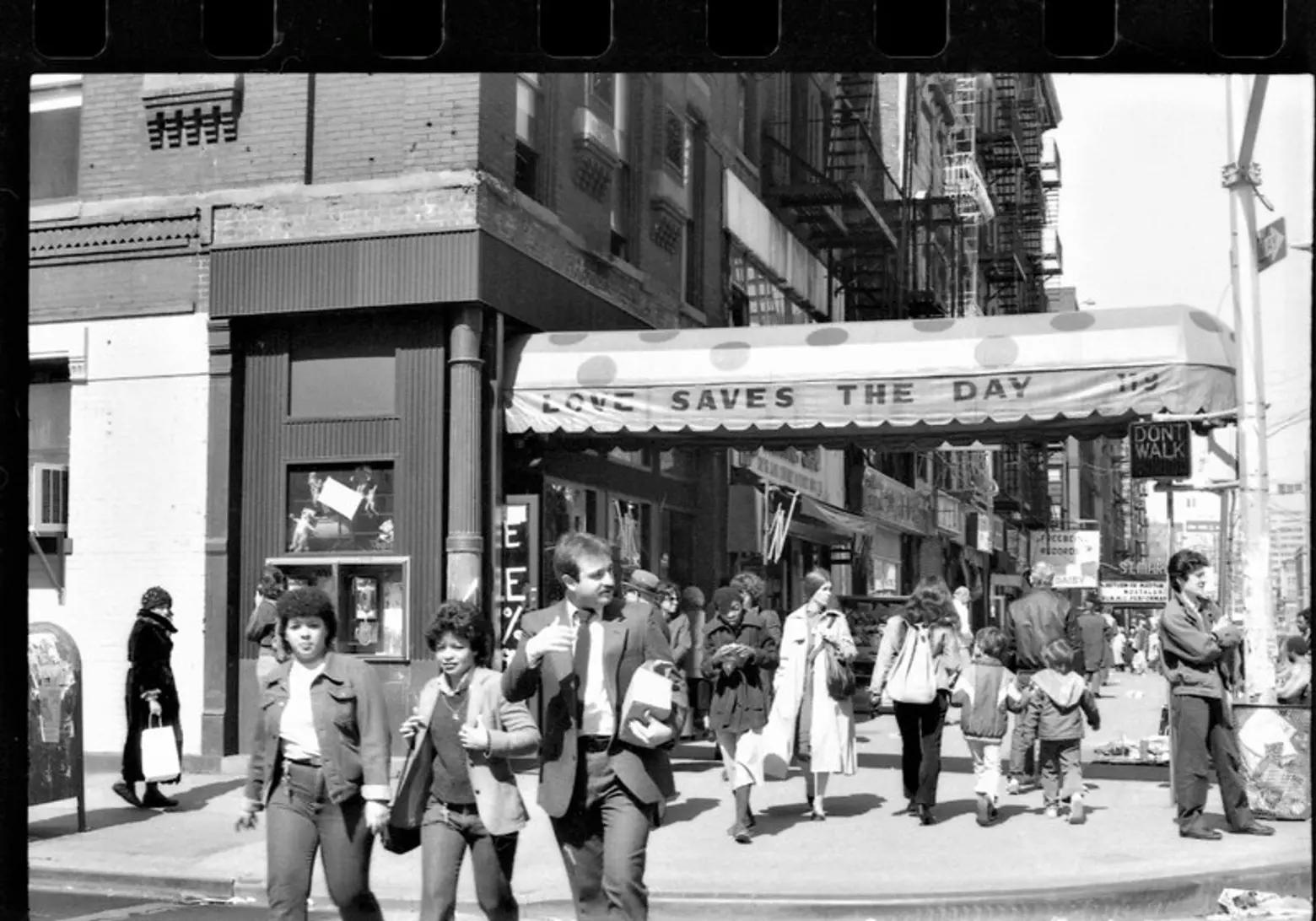
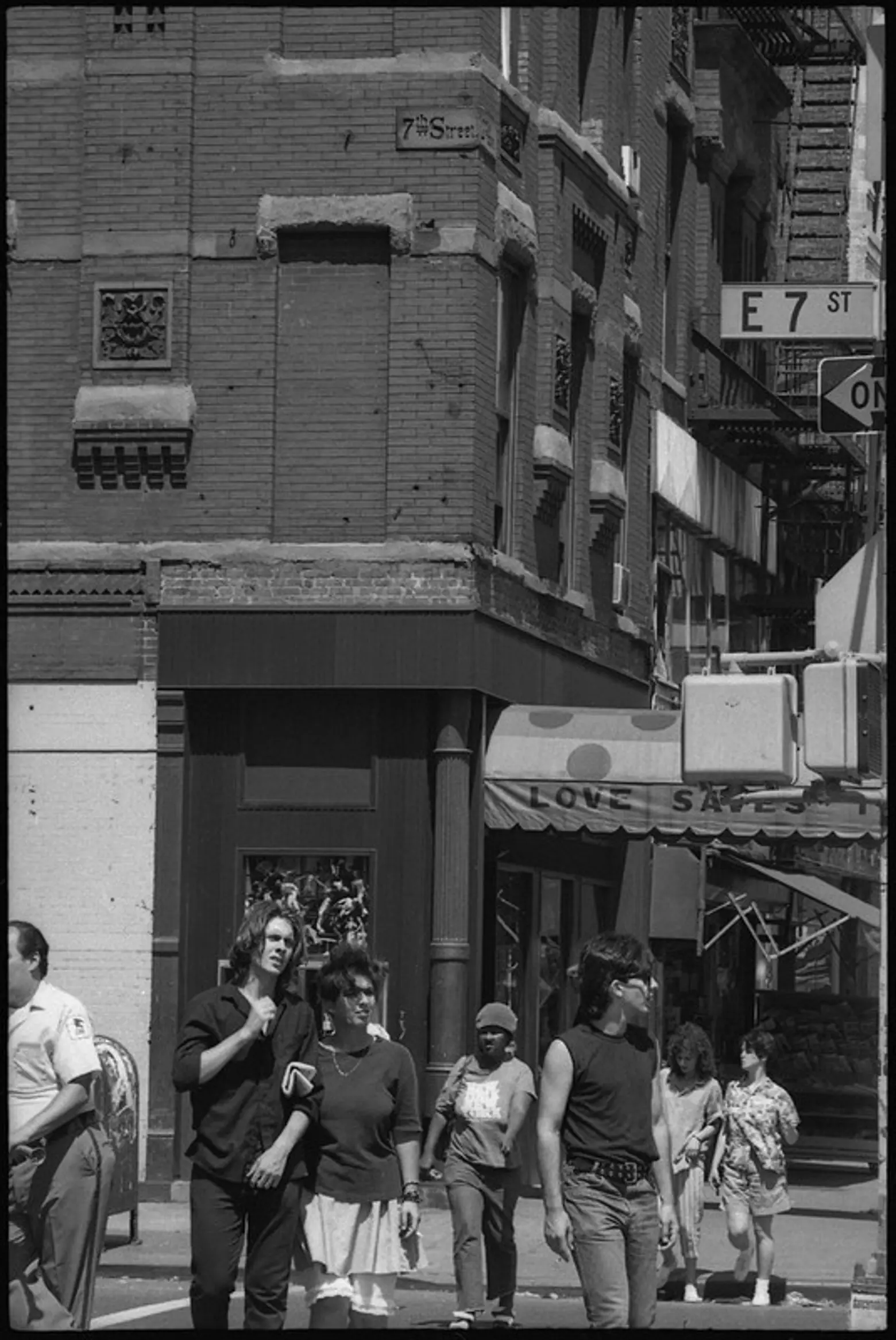
Unsurprisingly, scores of cherished New York businesses disappeared over the course of time that Carole took her photos. One poignant example is the beloved vintage clothing store “Love Saves the Day” which opened in 1966 on the corner of Second Avenue and 7th Street. Known for its floor-to-ceiling collection of kitschy leisurewear, games, and knick-knacks, it was the place where Madonna ditched her vintage jacket setting in motion the events of ‘Desperately Seeking Susan.’ The store finally closed its doors in 2009, and the building in which it was located was destroyed in a 2015 gas explosion that claimed two lives and destroyed dozens of homes.
+++
These images are among hundreds by Carole Teller that appear in the GVSHP Historic Image Archive, in the Carole Teller’s Changing New York Collection Part 1, Part II, and Part III, and the Carole Teller’s Godfather Part II Collection. Prints of all of these images, and much of the rest of the archive, are available for sale with proceeds benefitting GVSHP’s education and preservation work.
This post comes from the Greenwich Village Society for Historic Preservation. Since 1980, GVSHP has been the community’s leading advocate for preserving the cultural and architectural heritage of Greenwich Village, the East Village, and Noho, working to prevent inappropriate development, expand landmark protection, and create programming for adults and children that promotes these neighborhoods’ unique historic features. Read more history pieces on their blog Off the Grid.
RELATED:

